#its on netflix Point Is the one time shadow was actually like his old self girl i sobbed. too bad sonic was a dipshit though
Explore tagged Tumblr posts
Text
so magical that yakuza 1 and shadow the hedgehog came out the same year........ 2005 the best year for sega honestly.....
#snap chats#AND DAYS APART TOO IN JAPAN (rgg1 dec. 8 while shadow was dec. 15)#the gap is significantly wider for US releases but thats not important.....#japanese kids were winning on christmas i swear#'snap why are you bringing this up' isnt it obvious. i am playing shadow the hedgedhog#and i keep thinking about daigo playing shadow and then later down the line just talking to mine bout it cause he can be a lil sillay#i hope he had dreams where he and shadow got to be besties. and by Him And Shadow i mean he dreams himself as sonic#because obligatory Same VA Joke Is Obligatory IF WE CAN GET ONE (1) W FROM RCS VOICING DAIGO. LET IT BE THAT AT LEAST.#for me..... let it slide for me..... yes ik it was jason griffith voicing sonic (and shadow) back then but let it slide this once..#i refuse to acknowledge modern shadow. unless it's from that one uhhh fuck what was the cartoon called#its on netflix Point Is the one time shadow was actually like his old self girl i sobbed. too bad sonic was a dipshit though#a soul for a soul ig.... i think its ok just this once....#im getting so off topic but this is how i inflict my other interests upon you lot#i trap you into reading a post vaguely about rgg and then i make it about something else :)#look at my pfp you fool. i legally have to talk about shadow the hedgehog like once a month ok let me have this#while im here. like /i/ know this game is nine years long but sometimes i forget HOW long#326 endings and for what. because they love me thats why.#fym 'revenge at last' is only ending 11 that seems like the third route or so you'd take (only black doom missions)#ok ive talked long enough. anyway bye im gonna uhhhh god idk.... i keep getting distracted#i started watching kagerou while my sister was playing mysims the other day but i got too engrossed by her playing to continue#mysims was like. A White Whale of sorts in my house for a while since it was one of like five games my sis actually played#and it was her fave but one day 1.) we lost it 2.) our wii stopped working. since that day she's blamed me for losing it#WELL then i found it and i got the wii u working SO all that can stop now 👁️👁️ ok ive fr gone on too long#unfortunately i cant talk about EVERYTHING i want to lest i just turn this into a general games blog. but i wont i prommy#for now. bye fr i think my sis just got home actually LMAO
27 notes
·
View notes
Text
Best Serial Killer Movies of the ’90s Ranked
https://ift.tt/3tcsgCf
Someone must have left the freezer door in the morgue open, because grisly reminders of the past are thawing before our eyes. You can see it this weekend with the release of John Lee Hancock’s The Little Things, a throwback to the days when movie stars hung out at crime scenes instead of in spandex, and it’ll be more apparent next month with the launch of Clarice, a television spinoff of 1991’s The Silence of the Lambs. All the evidence points to only one conclusion: the serial killer thrillers of the ‘90s are back!
Not that we’re complaining. For a macabre minute or two, every Hollywood name appeared eager to play either the detective or the killer—the hunter or the obsessed, which often proved interchangeable for both characters. Granted that means there can be something formulaic about many of these movies. Yet they can also be bleak, hard-edged, and ambiguous. From our modern gaze, where the dominant studio conventions prefer reassuring morality tales and sunny lighting, these movies’ preference for shadows and discomfort in the mainstream is kind of startling.
So grab your magnifying glass and fortify your stomach, because we’re about to revisit some of the best (and worst) of ‘90s serial killer thrillers. (Also this list is strictly for the decade when the genre was at its height and it excludes slasher movies like Scream, which may feature serial killers but were not exactly adult-oriented thrillers.)
12. Eye of the Beholder (1999)
Eye of the Beholder is a tonal oddity that only passingly flirts with the conventions of ‘90s serial killer thrillers, all while it tries to pay homage to (read: rip-off) Alfred Hitchcock. But any credit it deserves for deviation—including making Ashley Judd’s central femme fatale the killer—it loses in execution. As a muddied, impenetrable tale about an intelligence officer (Ewan McGregor) who spies on and falls in love with a serial killer, Eye of the Beholder is a scattershot of bad ideas that run the gamut from ludicrous to misogynistic.
Beauty may be in the eye of the beholder, but this movie will close the lids over your pupils inside of 30 minutes.
11. Nightwatch (1997)
It feels a little mean to rag on Ewan McGregor back-to-back, but maybe serial killer movies just aren’t his genre? That could be at least one takeaway from an ill-advised double feature of Eye of the Beholder and Nightwatch, the latter of which is a remake of a 1994 Danish film that I’ve not seen… and probably won’t since both the original film and American remake are directed by the same man.
McGregor plays medical student Martin here, a kid who gets an after school job by becoming the night watch security at the local morgue. But as a series of grisly prostitute murders pile up, Martin realizes he needs to figure out who the killer is—that or continue to be framed by the necrophiliac fiend who keeps coming by the morgue for one last liaison. It’s exactly as skeevy as it sounds. Do yourself a favor and go your whole life without hearing Nick Nolte sing “This Old Man” while climbing onto a corpse.
10. Natural Born Killers (1994)
The movie that Quentin Tarantino disowned, Natural Born Killers is a seedy mess based on a Tarantino script that was heavily rewritten by Oliver Stone, David Veloz, and Richard Rutowski. The concept itself is a seemingly inevitable escalation of the “bad romance outlaws” archetype that’s been floating around Hollywood since at least 1950’s Gun Crazy, and which was then made iconic by Bonnie & Clyde (1967).
But whereas those films relied on bank robbers living fast, Natural Born Killers descends into a seeming final form with Mickey and Mallory (Woody Harrelson and Juliette Lewis) as giddy serial killers who are eventually out for maximum carnage. Technically the pair are supposed to be presented as victims of traumatic child abuse—and who are then wrongfully glorified by the media. But Stone’s sloppy and tanked vision lacks the discipline to achieve anything beyond its maliciousness. Early sequences imagining Mallory’s abusive childhood like it’s a television sitcom, and later psychedelic visions of Robert Downey Jr.’s opportunistic news reporter as the Devil, do little to divorce the film from its shallow self-satisfaction in close-ups of heads being shot.
The movie came under controversy in the years after its release for inspiring alleged copycat killers as well as school shooters. It feels irresponsible to blame media for actual violence, but it’s still quite an indictment that Stone’s attempt to criticize media glorification became a favorite for many a disturbed individual with a gun.
9. Kiss the Girls (1997)
When studying competent, middle of the road Hollywood thrillers, Kiss the Girls is a solid place to start. As a decently made bit of studio convention, the movie is anchored by strong elements like Morgan Freeman as James Paterson’s literary hero, Alex Cross, and Ashley Judd as Kate, the victim who survives a masked killer’s attempt to abduct her into his harem.
Moments like Kate’s escape sequence through the North Carolina wilderness are effectively filled with adrenaline, and Judd particularly gives the salacious piece conviction. However, it is salacious to a fault. Even if the movie toned down the source novel’s even more lurid misogyny, the film studies Kate and the other victims with a lascivious male gaze, blurring sex with violence, real world horror with leering entertainment. Right down to its title, the film can be rightly criticized as Hollywood glamourizing another story about violence against women. Whether that damns the whole movie depends on the viewer, but it certainly keeps it low on our list.
8. The Bone Collector (1999)
Marketed with a hell of a tagline about there being thousands of taxi cabs in New York City that’ll get you home—and one that won’t—The Bone Collector is almost comically slavish to the clichés of ‘90s moviemaking. The wrinkle here is that after a faux cab driver begins abducting his victims off the street, the crime psychologist who must stop him is entirely stuck by his bedside. Due to a tragic accident, Denzel Washington’s Lincoln Rhyme is paralyzed from the neck down. Yet he is still able to catch serial killers by communicating in the earpiece of police officer Amelia Donaghy (an entirely unconvincing Angelina Jolie).
Read more
Movies
Lost Girls Review: Netflix Takes on the Long Island Serial Killer
By Rosie Fletcher
Books
The Last Book on the Left Takes on the Grim History of Serial Killers
By Alec Bojalad
Together the pair stay one step behind the mystery killer’s tracks as he executes a series of increasingly gruesome and ridiculous murders. It’s preposterous, and in some ways a forerunner for Saw with the satisfaction it takes in absurd death traps, but Washington is effortlessly compelling, even when he never leaves his apartment. As a bit of absurd Hollywood fluff, right down to the ultimately lackluster unmasking of the killer, it can be entertaining, even if you’ll deny it afterward.
7. Copycat (1995)
More potent than I remembered, Copycat is a genuinely well-crafted Hollywood thriller that may not reinvent the wheel but takes it out for a damn good spin. In the driver’s seat is Sigourney Weaver as Dr. Helen Hudson, a criminal psychologist who is an expert on serial killers until one follows her into the bathroom after a guest lecture. He nearly hangs her from the ceiling. Following that white-knuckled opening, the film jumps years ahead and Helen has become agoraphobic and afraid to leave her home.
Yet when a local series of murders reveal the pattern of a predator imitating the methods of his favorite “celebrities”—one crime scene is like the Boston Strangler and another emulates the horrors of Jeffrey Dahmer—Helen is pulled out of retirement by a no-nonsense detective (Holly Hunter). The winning chemistry between Weaver and Hunter—who are refreshingly free from the studio-mandated romantic subplots in some of the other movies on this list—and the blunt force power of their performances aid this sincerely disquieting flick. A needlessly convoluted third act aside, the movie still works as a warning about the danger of fanboys a generation early.
6. Fallen (1998)
Denzel Washington appears again thanks to this clever supernatural spin on the serial killer genre. At the beginning of Fallen, Washington’s John Hobbes appears on top of the world. The serial killer he chased for years (Elias Koteas) is about to breathe deeply in the gas chamber. Yet after the lever is pulled, and with Koteas singing the Rolling Stones’ “Time is On My Side” until his last breath, a funny thing happens: the murders continue.
In fact, more than just the killings, strangers in the street sing “Time is On My Side” in Hobbes’ ear, and he soon realizes that he faces a devil of a killer whose been operating since the beginning—quite literally since the villain is a demon who was once an angel that fell with Lucifer. It’s a bizarre premise given strutting confidence thanks to Washington’s performance, as well as good supporting work by John Goodman and Donald Sutherland. Twenty years later and its ending still sticks with me.
5. The Exorcist III (1990)
If you haven’t seen The Exorcist III, we know what you’re thinking: “Really?!” Yes. In fact, this isn’t even an exorcist movie; it should’ve been titled Legion like the 1983 novel it’s based on. Alas writer-director William Peter Blatty was forced to use the title and do reshoots that added an exorcism in the climax. Still, this supernatural thriller which involves a serial killer back from the dead is far better than it has any right to be.
Following the character of Lt. Kinderman from the 1973 masterpiece, the middle-aged gumshoe is now played by George C. Scott instead of the late Lee J. Cobb, and he possesses Scott’s usual love for contrasts between the restrained whisper and a bombastic howl. He also makes a sympathetic, secular detective forced to face the horrors of Hell when a series of murders committed against Catholic priests appear to be the work of the Gemini Killer (Brad Dourif), a serial killer whom Kinderman sent to the chair more than 10 years ago.
Read more
Movies
The Exorcist III is a Classic and Better Than You Remember
By Jim Knipfel
Movies
The Exorcist Is Still the Scariest Movie Ever Made
By David Crow
Somehow the fiend—plus Kinderman’s long dead pal Father Damien Karras (Jason Miller)—appear to now be living in the same body of a John Doe kept in a mental asylum. With an unrelenting atmosphere of dread, palpable tension, and more of Blatty’s intellectual struggle with concepts of faith and evil, the film is more high-minded than its hacky title suggests. It also features one of the best jump scares in movie history.
4. Summer of Sam (1999)
The only movie on this list directly based on an actual serial killer’s crimes, Spike Lee’s Summer of Sam is a serious-minded joint. However, it’s only partially about the murders perpetrated by David Berkowitz, aka the “.44 Caliber Killer,” aka the Son of Sam. Rather the film focuses on the effects a serial killer has on the culture of New York City during the sweltering summer of 1977, and how it affects young lives trying to make it in the big city.
Influenced by Lee and his co-writers Michael Imperioli and Victor Colicchio’s memories of growing up in 1970s New York, the pic is a love letter to a grim moment in history when the city was about to explode with murders, blackouts, crime, and disco. All of this is digested from the vantages of Vinny (John Leguizamo), a philandering hairdresser guilt-ridden for cheating on his wife (Mira Sorvino), and his childhood pal Ritchie (Adrien Brody), who’s left the old neighborhood behind to join the fledgling punk rock scene.
With a greater interest in how a serial killer affects the culture and institutions of a city on edge than being a traditional crime drama, Summer of Sam is a bit of a forerunner to David Fincher’s far more polished Zodiac from a few years later. With heavy-handed dialogue and a plot too big for Lee to fully get his arms around, even at 142 minutes, Summer of Sam can be uneven and messy. But it has the sweaty incorrigibility of a long night out, and of revelries half remembered like from a fever dream.
3. The Talented Mr. Ripley (1999)
The rare serial killer movie told entirely from the perspective of the killer, Anthony Minghella’s The Talented Mr. Ripley is disarmingly creepy. Despite its glossy awards bait sheen, there is a cold-blooded streak that runs deep to the heart of the piece, likely due to Patricia Highsmith’s source 1955 novel. Starring Matt Damon fresh off his Good Will Hunting golden boy sheen, the film uses its casting to disorient and ultimately disturb.
Like Highsmith’s book, the film is not structured like a traditional thriller. It instead favors a detached ambivalence about its seemingly nebbish hero as he agrees to become an errand boy for the rich by traveling to 1950s Italy in order to retrieve a silver spoon cad (Jude Law) for his father. But the more time Tom Ripley (Damon) spends with Law’s Dickie Greenleaf, the more he grows envious of Dickie’s lifestyle, his wealth and confidence, and maybe even his affection for socialite Marge (Gwyneth Paltrow). There is a subtle—too subtle due to ‘90s Hollywood conventions—homoerotic undercurrent throughout the film as Ripley slowly works up the courage to take his first life. It won’t be his last.
Read more
Movies
Knives Out: When Murder Makes You a Better Person
By Natalie Zutter
Movies
Seven: The Brilliance of David Fincher’s Chase Scene
By Ryan Lambie
Highsmith wound up publishing four subsequent sequels to The Talented Mr. Ripley, but unfortunately no more were made with Damon. Perhaps because this was too unsettling for an ongoing franchise.
2. Seven (1995)
While watching David Fincher’s masterful Seven, the thing that immediately stands out is the oppressive nihilism that permeates throughout. There were decades of neo noir before this detective yarn about the hunt for a serial killer, but none demonstrated such an overbearing sense of despair before the opening credits were even concluded. And perhaps what makes it unshakable is how welcoming the film is toward bleakness; it succumbs long before the gut-punch finale.
Telling the story of an old cop days from retirement (Morgan Freeman) and a hotheaded rookie detective (Brad Pitt), Andrew Kevin Walker’s script has an economy of pace that still impresses despite its cynicism. Very quickly one murder becomes two, then three, and soon four. Yet none of the atrocities are reveled in by Fincher’s blocking; they’re off-screen mutilations which leave psychic damage on his two leads and, eventually, us. The deaths also quickly establish a pattern that their serial killer is targeting seven souls, each intended to embody one of the seven deadly sins.
The movie is a classic now for its climax where the killer “John Doe” (a reptilian Kevin Spacey) turns himself in and leads the cops into the darkest pit, but it’s the entire package that makes this one linger more than 25 years later. At the end of the film, Somerset quotes Hemingway by saying, “‘The world is a fine place and worth fighting for.’ I agree with the second part.” I’m not convinced his film does.
1. The Silence of the Lambs (1991)
As the film that kick-started the idea that serial killers could create their own film genre, The Silence of the Lambs still remains the best of its kind. Blessedly unaware that it was creating conventions for countless copycats, the film tells its psychological drama with simplicity and clarity. Whereas other films on this list bask in their bleakness, there is a dogged optimism and even perverse warmth to this Jonathan Demme adaptation of Thomas Harris’ Silence of the Lambs novel. And that’s of course largely attributable to the casting of Anthony Hopkins and Jodie Foster.
As Dr. Hannibal Lecter, Hopkins is of course monumental. It’s a performance that turned a quinquagenarian into an overnight movie star, and became Hopkins’ calling card as he returned to the not-so-good doctor’s well one too many times. Still, he’s undeniably enthralling as Hannibal, a cannibal psychologist with superhuman powers of observation and mental menace. Even so, Foster is often overlooked by critics for her own contributions as the FBI trainee who’s proverbially fed to the incarcerated Lecter—a pretty face to get the serial killer to consult pro bono on the crimes of another mass murderer. It’s just one more example of casual sexism faced by Clarice that gives Foster as much to play as Hopkins.
Read more
Culture
David Fincher’s Zodiac: The Movie That Never Ended
By Don Kaye
Movies
The Little Things Ending Explained
By David Crow
Surrounded by the slights and prejudices of men—be they in law enforcement or straight jackets—Clarice is constantly underestimated. She finds an intellectual rapport with Hannibal, but she pulls herself out of the darkest night, and the screaming of the lambs, without assistance. Her perseverance matched by Hannibal’s darkly seductive qualities is the juxtaposition that makes Silence of the Lambs one of the finest films of its decade.
cnx.cmd.push(function() { cnx({ playerId: "106e33c0-3911-473c-b599-b1426db57530", }).render("0270c398a82f44f49c23c16122516796"); });
The post Best Serial Killer Movies of the ’90s Ranked appeared first on Den of Geek.
from Den of Geek https://ift.tt/3r5iYGk
18 notes
·
View notes
Text
TV I Liked in 2020
Every year I reflect on the pop culture I enjoyed and put it in some sort of order.
Was there ever a year more unpredictably tailor-made for peak TV than 2020? Lockdowns/quarantines/stay-at-home orders meant a lot more time at home and the occasion to check out new and old favorites. (I recognize that if you’re lucky enough to have kids or roommates or a S.O., your amount of actual downtime may have been wildly different). While the pandemic resulted in production delays and truncated seasons for many shows, the continued streaming-era trends of limited series and 8-13 episode seasons mean that a lot of great and satisfying storytelling still made its way to the screen. As always, I in no way lay any claims to “best-ness” or completeness – this is just a list of the shows that brought me the most joy and escapism in a tough year and therefore might be worth putting on your radar.
10 Favorites
10. The Right Stuff: Season 1 (Disney+)
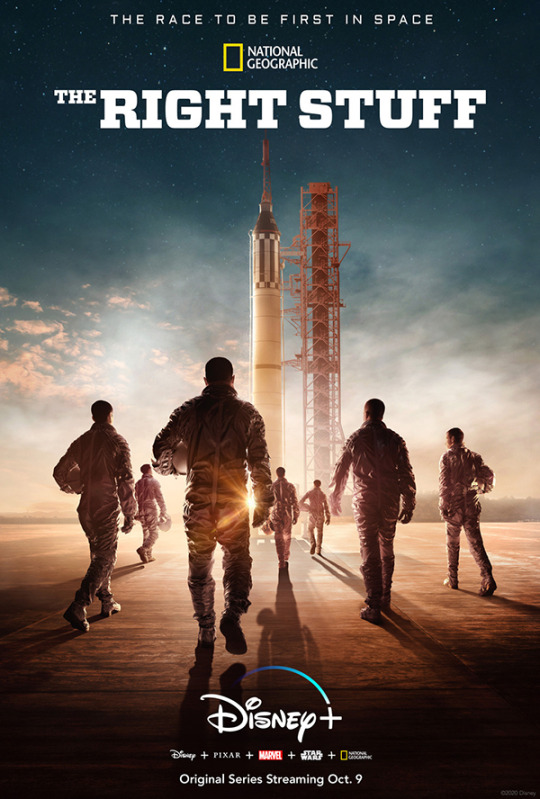
As a space program enthusiast, even I had to wonder, does the world really need another retelling of NASA’s early days? Especially since Tom Wolfe’s book has already been adapted as the riveting and iconoclastic Philip Kaufman film of the same name? While some may disagree, I find that this Disney+ series does justify its existence by focusing more on the relationships of the astronauts and their personal lives than the technical science (which may be partially attributable to budget limitations?). The series is kind of like Mad Men but with NASA instead of advertising (and real people, of course), so if that sounds intriguing, I encourage you to give it a whirl.
9. Fargo: Season 4 (FX)
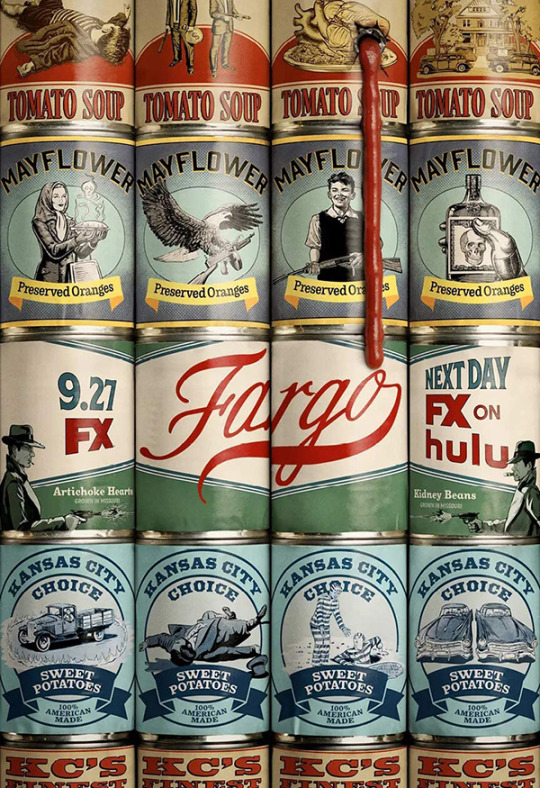
As a big fan of Noah Hawley’s Coen Brothers pastiche/crime anthology series, I was somewhat let down by this latest season. Drawing its influence primarily from the likes of gangster drama Miller’s Crossing – one of the Coens’ least comedic/idiosyncratic efforts – this season is more straightforward than its predecessors and includes a lot of characters and plot-threads that never quite cohere. That said, it is still amongst the year’s most ambitious television with another stacked cast, and the (more-or-less) standalone episode “East/West” is enough to make the season worthwhile.
8. The Last Dance (ESPN)

Ostensibly a 10-episode documentary about the 1990s Chicago Bulls’ sixth and final NBA Championship run, The Last Dance actually broadens that scope to survey the entire history of Michael Jordan and coach Phil Jackson’s careers with the team. Cleverly structured with twin narratives that chart that final season as well as an earlier timeframe, each episode also shifts the spotlight to a different person, which provides focus and variety throughout the series. And frankly, it’s also just an incredible ride to relive the Jordan era and bask in his immeasurable talent and charisma – while also getting a snapshot of his outsized ego and vices (though he had sign-off on everything, so it’s not exactly a warts-and-all telling).
7. The Queen’s Gambit (Netflix)

This miniseries adaptation of the Walter Tevis coming-of-age novel about a chess prodigy and her various addictions is compulsively watchable and avoids the bloat of many other streaming series (both in running time and number of episodes). The 1960s production design is stunning and the performances, including Anya Taylor-Joy in the lead role, are convincing and compelling.
6. The Great: Season 1 (hulu)
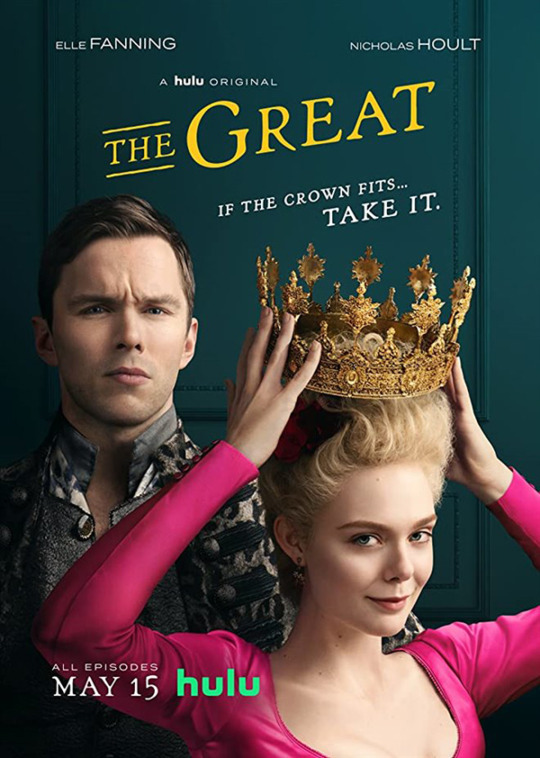
Much like his screenplay for The Favourite, Tony McNamara’s series about Catherine the Great rewrites history with a thoroughly modern and irreverent sensibility (see also: Sofia Coppola’s Marie Antoinette). Elle Fanning brings a winning charm and strength to the title role and Nicholas Hoult is riotously entertaining as her absurdly clueless and ribald husband, Emperor Peter III. Its 10-episodes occasionally tilt into repetitiveness, but when the ride is this fun, why complain? Huzzah!
5. Dispatches From Elsewhere (AMC)
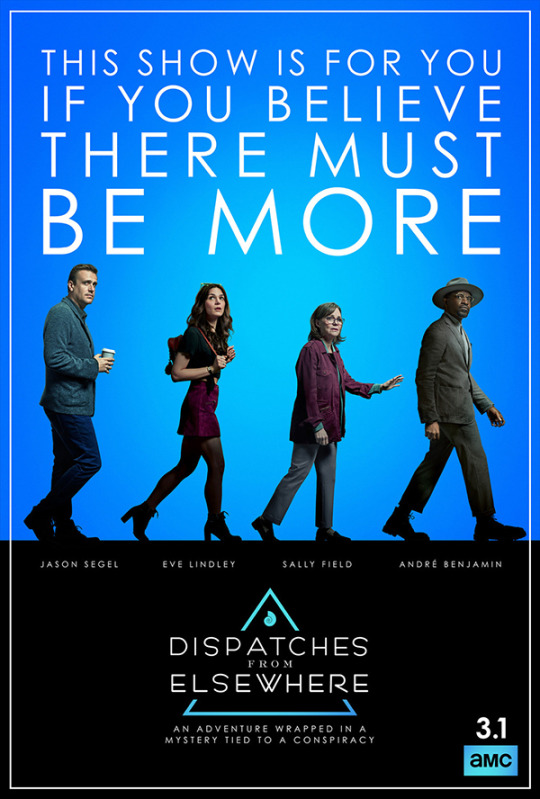
A limited (but possibly anthology-to-be?) series from creator/writer/director/actor Jason Segal, Dispatches From Elsewhere is a beautiful and creative affirmation of life and celebration of humanity. The first 9 episodes form a fulfilling and complete arc, while the tenth branches into fourth wall-breaking meta territory, which may be a bridge too far for some (but is certainly ambitious if nothing else). Either way, it’s a movingly realized portrait of honesty, vulnerability and empathy, and I highly recommend visiting whenever it inevitably makes its way to Netflix, or elsewhere…
4. What We Do in the Shadows: Season 2 (FX)
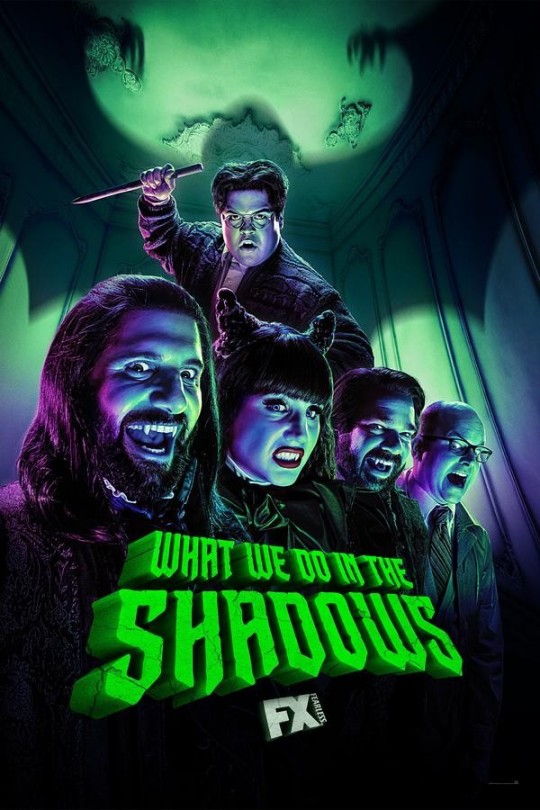
The second season of WWDITS is more self-assured and expansive than the first, extending a premise I loved from its antecedent film – but was skeptical could be sustained – to new and reinvigorated (after)life. Each episode packs plenty of laughs, but for my money, there is no better encapsulation of the series’ potential and Matt Berry’s comic genius than “On The Run,” which guest-stars Mark Hamill and features Laszlo’s alter ego Jackie Daytona, regular human bartender.
3. Ted Lasso: Season 1 (AppleTV+)
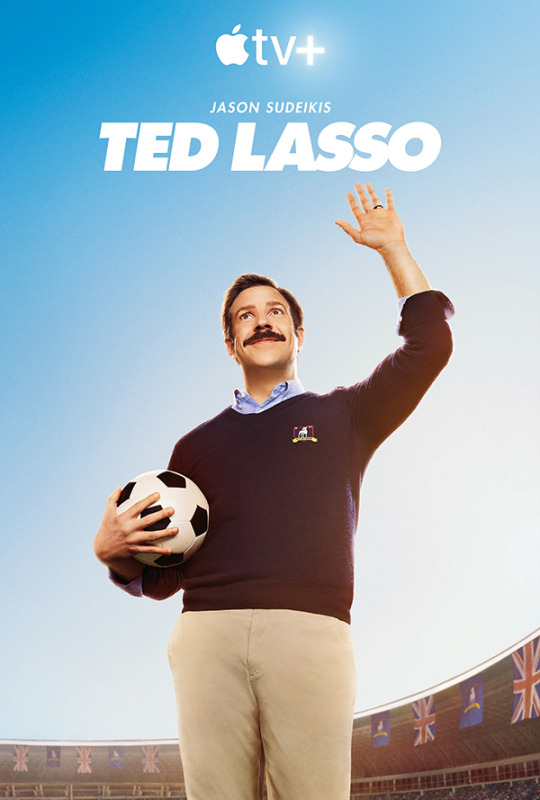
Much more than your average fish-out-of-water comedy, Jason Sudeikis’ Ted Lasso is a brilliant tribute to humaneness, decency, emotional intelligence and good coaching – not just on the field. The fact that its backdrop is English Premier League Soccer is just gravy (even if that’s not necessarily represented 100% proficiently). A true surprise and gem of the year.
2. Mrs. America (hulu)
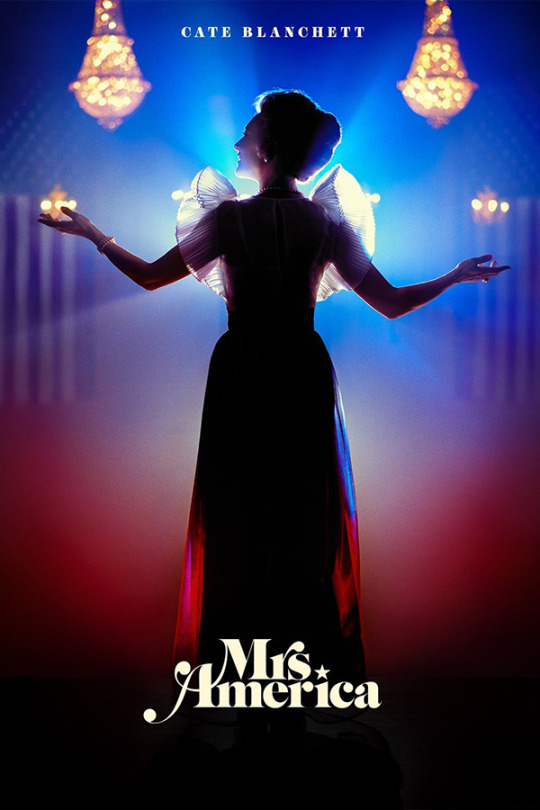
This FX miniseries explores the women’s liberation movement and fight for the Equal Rights Amendment in the 1970s and its opposition by conservative women including Phyllis Schlafly. One of the most ingenious aspects of the series is centering each episode on a different character, which rotates the point of view and helps things from getting same-y. With a slate of directors including Ryan Bowden and Anna Fleck (Half-Nelson, Sugar, Captain Marvel) and an A-List cast including Cate Blanchett, Rose Byrne, Uzo Aduba, Sarah Paulson, Margo Martindale, Tracey Ulman and Elizabeth Banks, its quality is right up there with anything on the big screen. And its message remains (sadly) relevant as ever in our current era.
1. The Good Place: Season 4 (NBC)

It was tempting to omit The Good Place this year or shunt it to a side category since only the final 4 episodes aired in 2020, but that would have been disingenuous. This show is one of my all-time favorites and it ended perfectly. The series finale is a representative mix of absurdist humor and tear-jerking emotion, built on themes of morality, self-improvement, community and humanity. (And this last run of eps also includes a pretty fantastic Timothy Olyphant/Justified quasi-crossover.) Now that the entire series is available to stream on Netflix (or purchase in a nice Blu-ray set), it’s a perfect time to revisit the Good Place, or check it out for the first time if you’ve never had the pleasure.
5 of the Best Things I Caught Up With
Anne With An E (Netflix/CBC)
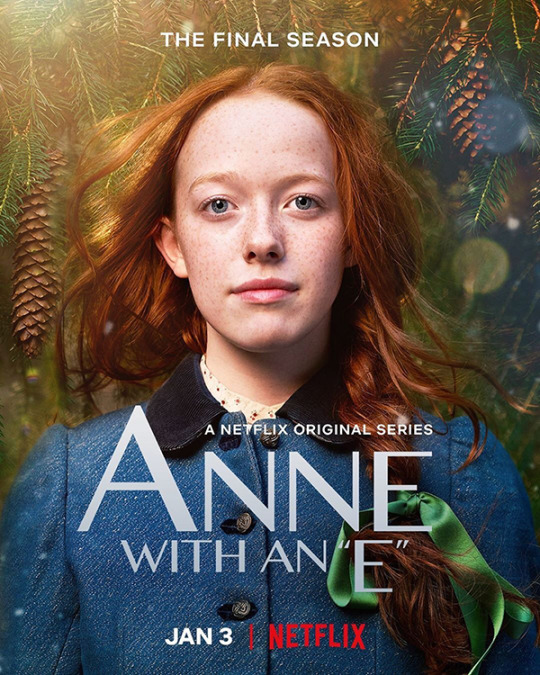
Another example of classic literature I had no prior knowledge of (see also Little Women and Emma), this Netflix/CBC adaptation of Anne of Green Gables was strongly recommended by several friends so I finally gave it a shot. While this is apparently slightly more grown-up than the source material, it’s not overly grimdark or self-serious but rather humane and heartfelt, expanding the story’s scope to include Black and First Nations peoples in early 1800s Canada, among other identities and themes. It has sadly been canceled, but the three seasons that exist are heart-warming and life-affirming storytelling. Fingers crossed that someday we’ll be gifted with a follow-up movie or two to tie up some of the dangling threads.
Better Call Saul (AMC)

I liked Breaking Bad, but I didn’t have much interest in an extended “Breaking Bad Universe,” as much as I appreciate star Bob Odenkirk’s multitalents. Multiple recommendations and lockdown finally provided me the opportunity to catch up on this prequel series and I’m glad I did. Just as expertly plotted and acted as its predecessor, the series follows Jimmy McGill/Saul Goodman on his own journey to disrepute but really makes it hard not to root for his redemption (even as you know that’s not where this story ends).
Joe Pera Talks With You (Adult Swim)
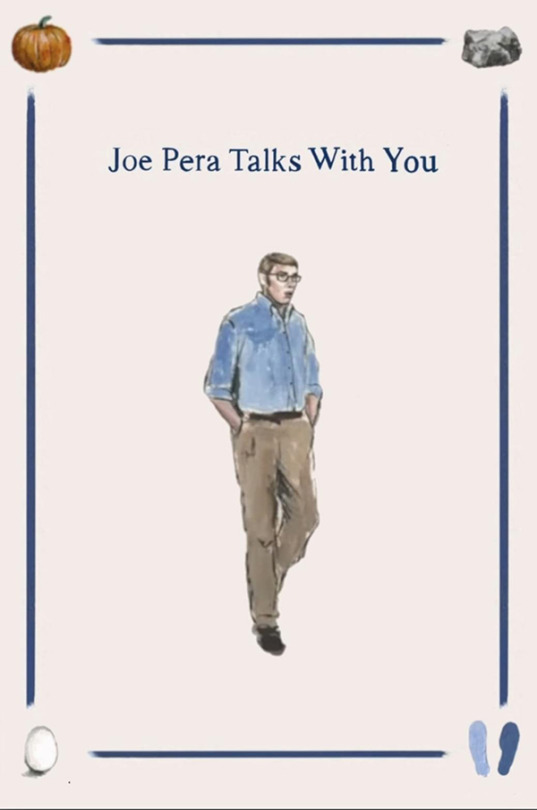
It’s hard to really describe the deadpan and oddly soothing humor of comedian Joe Pera whose persona, in the series at least, combines something like the earnestness of Mr. Rogers with the calm enthusiasm of Bob Ross. Sharing his knowledge on the likes of how to get the best bite out of your breakfast combo, growing a bean arch and this amazing song “Baba O’Reilly” by the Who – have you heard it?!? – Pera provides arch comfort that remains solidly on the side of sincerity. The surprise special he released during lockdown, “Relaxing Old Footage with Joe Pera,” was a true gift in the middle of a strange and isolated year.
The Mandalorian (Disney+)
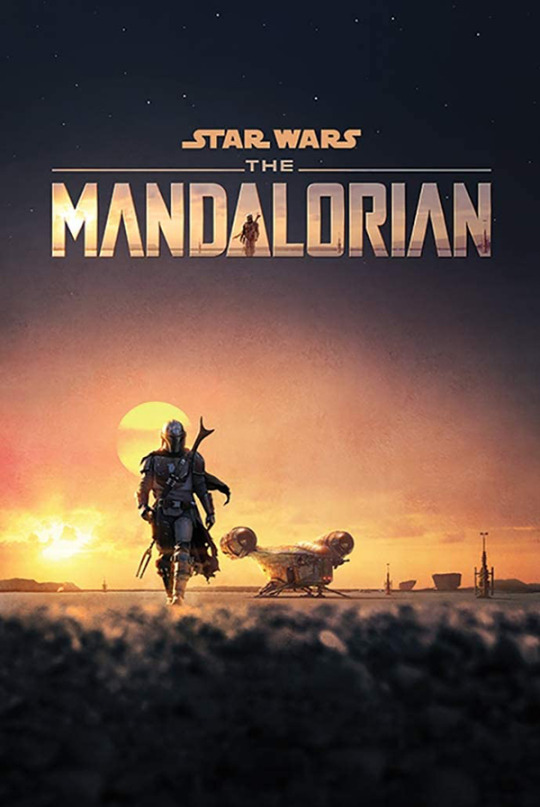
One of the few recent Star Wars properties that lives up to its potential, the adventures of Mando and Grogu is a real thrill-ride of a series with outstanding production values (you definitely want to check out the behind-the-scenes documentary series if you haven’t). I personally prefer the first season, appreciating its Western-influenced vibes and somewhat-more-siloed story. The back half of the second season veers a little too much into fan service and video game-y plotting IMHO but still has several excellent episodes on offer, especially the Timothy Olyphant-infused energy of premiere “The Marshall” and stunning cinematography of “The Jedi.” And, you know, Grogu.
The Tick (Amazon Prime)

I’ve been a fan of the Tick since the character’s Fox cartoon and indie comic book days and also loved the short-lived Patrick Warburton series from 2001. I was skeptical about this Amazon Prime reboot, especially upon seeing the pilot episode’s off-putting costumes. Finally gaining access to Prime this year, I decided to catch up and it gets quite good!, especially in Season 2. First, the costumes are upgraded; second, Peter Serafinowicz’s initially shaky characterization improves; and third, it begins to come into its own identity. The only real issue is yet another premature cancellation for the property, meaning Season 2’s tease of interdimensional alien Thrakkorzog will never be fulfilled. 😢
Bonus! 5 More Honorable Mentions:
City So Real (National Geographic)
The Good Lord Bird (Showtime)
How To with John Wilson: Season 1 (HBO)
Kidding: Season 2 (Showtime)
Unbreakable Kimmy Schmidt: Kimmy Vs The Reverend (Netflix)
11 notes
·
View notes
Text
So, uh, I had a bunch of thoughts and it turned into 1500 words of whatever this is
Building off my previous post about Jaskier getting captured by Nilfgaard or whatever and Geralt being confronted by a Doppler wearing his face (and please be mindful that literally all I know about the Witcher is from Netflix and stuff posted in the Geraskier tag here on Tumblr lol)
-Yennefer was also, at some point, captured by Nilfgaard. Probably during that last big climactic battle after she sort of self-destructed. She eventually manages to free herself, being all magical and badass, and she finds Jaskier in his cell. He’s beaten, bloodied, and generally in really rough shape. Despite their differences, she takes pity on him – even he doesn’t deserve to be subject to Nilfgaard’s cruelty – and she frees him, too.
-When Geralt finally tracks Jaskier down to wherever he was being held, the place is half-destroyed and Jaskier is gone. He’s left wondering what happened to his bard, unsure if he survived whatever was unleashed on the place.
-Thus starts the wild adventures of Yennefer and Jaskier travelling together. They don’t really plan to become travel companions, it just sort of happens – they spend some time in the same town together for a while, recuperating from their imprisonment, and they sort of bond. Jaskier probably performs Her Sweet Kiss in a tavern somewhere while trying to scrounge together some coin, and Yennefer is like, “First of all, I know that song is about me and Geralt. Second of all, I know that song is about YOU and Geralt.”
-They bond over their heartbreak and form a Fuck You, Geralt club.
-Months or years down the line, Geralt is wandering through a town with Ciri, looking for easy monsters to kill to train her and pick up coin. He hears a familiar voice – Jaskier singing in a nearby tavern. He’s shocked and excited and filled with trepidation – the last time he saw Jaskier, after all, it was a Doppler – but he enters the tavern with Ciri in tow.
-Ciri recognizes Jaskier as Julian, the charming bard who used to perform regularly in Cintra when she was a little girl. Her mother adored him and grandmother was deeply suspicious of him. When her parents died, he stopped visiting. But she knows that face and she knows that voice – he hasn’t changed a bit.
-Jaskier was performing some sort of solemn and bitter song about the White Wolf. Not hateful or damning – he can’t bear to actually sully Geralt’s reputation, given that he a) is in love with the bastard, and b) worked so hard to make a good name for him. But the song isn’t celebratory or happy or adoring. I’m thinking maybe even just the literal Song of The White Wolf from the OST.
-He catches Geralt’s eye shortly after Geralt enters, faltering on a line. Which NEVER happens. When Jaskier stops singing altogether, Geralt gestures for him to continue. “Don’t stop on my account. I’ve not heard this particular song.”
-Jaskier finishes his song. Geralt stands in the doorway like a doofus, listening to him sing, stung by the words, but strangely overwhelmed with relief and fondness to see his bard and alive and well and still doing what he loves.
-When Jaskier finishes the song, he tells his enraptured audience that he will unfortunately have to cut his evening short, grabs his things, and B-lines for a backdoor. Geralt moves to follow, but Yennefer basically materializes from the shadows to block his path. He’s confused and shocked to discover that they’re travelling together, Yennefer tells him to leave well enough alone, and she soon follows after Jaskier with Geralt watching in bewilderment
-Sometime later, Jaskier is again captured – but not by Nilfgaard.
-Yennefer seeks out Geralt. Explains what happened. Jaskier has been brought back to court to serve as Viscount. Geralt is ashamed that he did not, exactly, realize Jaskier was titled, to which Yennefer calls him an ass and points out that she heard Jaskier ramble about it on numerous occasions long before they even went on the fateful dragon hunt together. Geralt had always tuned him out, because he was an asshole and a shitty friend
-They head to Lettenhove. Jaskier is surprised to see Geralt, but quickly masks it with anger. Tells Geralt to fuck off and let him live his life. There’s some back and forth – Ciri and Yennefer try to talk to him, too, but to limited success, and it’s determined that Geralt has the best chance of getting a straight answer from him (because Jaskier is in love with him, though he doesn’t know that, and also because he has known Jaskier the longest and knows how to connect with him, no matter how shitty he actually is at doing so)
-He’s not actually captured or imprisoned or being held for ransom or anything of that sort. He’s literally just gone back to Lettenhove to properly serve as Viscount. But that doesn’t make any sense, because Jaskier clearly never had any interest in doing so, considering he left behind the comfort of nobility to live the rough life of a travelling bard. And he did this for DECADES. Clearly, something happened that forced him to return.
-Geralt finally gets an explanation from him: Nilfgaard (or maybe some other force, idk) has been moving in on Lettenhove. Their movement has been slow and insidious, enough to be a clear danger, but not enough that Lettenhove can seek aid/support from any of its neighbours. They don’t stand a chance against this threat alone, and they don’t want to be sitting on the defensive waiting for the inevitable.
-But if this enemy took an obvious, aggressive action against Lettenhove or its nobility, they could vie for protection and support from their neighbours. Enter Jaskier – a noble who has essentially never served his station, which means he isn’t needed and he won’t be missed. They want to stage an assassination against him and frame their enemy for it.
-Geralt immediately tells Jaskier he can’t do this. Jaskier, scowling at him, sneers, “You don’t control me, Geralt. I decide my own fate.”
-(I also visualize this scene happening while Jaskier is nursing a goblet of wine. He follows up this statement by downing and then slamming the goblet onto a nearby table. The wine has stained his lips red and splattered onto his pale hand, and all Geralt can think of is blood.)
-Geralt tries to follow Jaskier as he walks away, to reason with him, drag him away, maybe even beg him, but Jaskier doesn’t even look over his shoulder as he snaps his fingers and guards converge on Geralt to block his path. Geralt is left to watch Jaskier disappear through a door, slamming it shut behind him.
-Geralt tells Yennefer and Ciri. They are despondent and also like, “Fuck that, nope, we won’t let him be assassinated.”
-The hit is slated to happen at a welcome home banquet the following night. The trio show up unannounced and uninvited to the banquet, and as soon as Jaskier sees them he tells the guards to see to it that they’re removed. As guards crowd around them and start forcing them out of the hall, Geralt shouts, “Jaskier, you can’t do this!” And Jaskier just looks him dead in the eye and says, “Just let me live my life, Geralt. However I choose to.”
-Obviously, Geralt, Yennefer, and Ciri aren’t about to just LEAVE, but they also aren’t going to fight and cause a huge scene. It’s not just Lettenhove present at this banquet.
-They find windows with a good vantage point, watching for any sign of someone posing as the enemy.
-Later on in the night, Jaskier steps up to perform. He briefly explains the years he spent adventuring and singing, clutching his precious elven lute with a mix of reverence and fear. He says he’s leaving behind that life, but wants to sing one last time, for old time’s sake. Of course he sings, “Toss a Coin to Your Witcher.”
-During that building and repetitious final chorus, it happens. A Doppler had been hired to pose as one of the party guests, blending perfectly, and it emerges from the shadows in the guise of an enemy assassin, firing a crossbow bolt straight into Jaskier’s throat.
-The bard falls to his knees, clutching at his throat with one hand, gasping as blood pours over his hands, and Geralt is outside just SCREAMING because it happened too suddenly for Yennefer to try to stop it with her magic.
-But Jaskier is still clutching his lute with the other hand, and the beautiful filigree and detailing starts to glow. It’s filled with elven magic, unbeknownst to him – the same magic that has kept him so young, the same magic that might have protected him from the Djinn had he carried his lute with him that day.
-In a panic, he tears the bolt free from his neck, the hole spurting and gushing blood – and then it stops. The blood flow slows. And the hole in his throat slowly seals. The glow fades from the lute, all the beautiful detailing gone, and Jaskier is left covered in his own blood but miraculously alive.
-There is a shocked pause before the entire banquet explodes into chaos. People cheering for Jaskier’s survival – outcry at the assassination attempt – demands to find the assassin that a select few people know has already shifted back into the guise of a bewildered party guest by this point, the perfect master of disguise.
-And Geralt bursts in through the fucking window, shoving people out of the way as he rushes toward Jaskier, who he grabs and pulls into the fiercest bear hug. In a low, rough voice, he rasps, “Don’t ever scare me like that again.”
-And Jaskier can’t even pretend to be angry anymore, because he genuinely thought he was about to die and he DIDN’T, so he hugs Geralt back and just sobs against his shoulder.
88 notes
·
View notes
Text
DIO’s Hired Assassins Ranked
I’ve been rewatching JoJo’s Bizarre Adventure: Stardust Crusaders lately because it finally came to Netflix and thus I could get my old DM to watch it (for the sake of memes). I haven’t watched it since it came out and remembered having something against it, but I couldn’t remember what exactly; my fondness has only grown thanks to how memetic it is.
The answer: it’s too long and the villains aren’t especially memorable, DIO aside.
After I got to Alessi, I decided I wanted to rank them (specifically to put him as dead last, though I ended up not doing that). I was originally going to put this on my personal blog, but realized that I’m evaluating a bunch of weird spells, so it’s here.
IMHO, Stands split pretty well between Monk (fighting spirit, etc.) and some sort of caster (so many of them are just flat-out spells). The majority of the villains are the latter type, so I figured this would work here.
I’m going to skip anyone on Team Joestar and DIO because that’s just unfair.
Murder Stands
Before I get underway, I want to introduce a term I’ll be using again and again: “Murder Stand.” This is a Stand which has no ability beyond hurting/killing people. I take off points for this because even Punch Ghosts like Star Platinum have other utility.
Unranked: Thoth (Boingo) -- Precognitive Manga
Thoth is all potential and little application -- mostly because the Oingo Boingo brothers are comic relief villains. Thoth’s ability is to predict what will happen to the reader (who doesn’t necessarily have to be the Stand user) in the next few minutes, but without enough context for it to get used reliably. Indeed, every character who uses it ends up hurt. Since it’s an item, it’s possible that someone could steal it from Boingo permanently. That said, the possibilities with this Stand are immense, so it should be far more powerful than presented.
25 - Sun (Arabia Fats): A miniature sun with a suite of solar powers.
Illuminates a large area as though it were noon. (Sun sits at approximately 100 meters in the air and has a very wide area of effect.)
Raises the ambient temperature in that area to intolerable levels
Can fire highly accurate energy blasts at anything in the area
This Stand appears in a single episode (not quite a BLAM episode: it fits contextually, but it’s never discussed beforehand or afterward) and the only dialogue we get comes from Team Joestar, so we don’t know what the Stand’s actual parameters are. We do know that its use range is largely taken up by how high it sits in the sky and that it affects everything in its area of effect indiscriminately because Arabia Fats is present and has to take precautions against it. This makes the Murder Stand aspect of this suspect: there just aren’t many situations where you need (or would even want) to kill on that scale. Since we don’t know if Arabia Fats can control the light or heat his Stand produces (beyond firing lasers), any further utility is also suspect.
24 - Emperor (Hol Horse): magic missile in the form of a gun with a homing bullet.
Don’t get me wrong, having magic missile at-will is a great thing, but this isn’t an unerring missile (as in D&D) but a homing missile (as in most incarnations of the spell I’ve found elsewhere). It can miss. It’s also a 1st-level spell and there are far more powerful effects on this list. (No idea why this is called “Emperor.”)
23 - Deep Blue Moon (Imposter Captain Teneil): punch ghost fishfolk with various underwater abilities.
This Stand is powerful only if encountered in the water. It’s more powerful than the Emperor and has slightly more utility, but not by much. (Not terribly lunar beyond the association with water.)
22 - Khnum (Oingo): alter self (or possibly disguise self as a Transmutation).
Oingo only ever uses this on his face and hair, but supposedly he can use this on the rest of his body, altering height, weight, and possibly clothing in the process. This has more utility than any of the above, but Oingo’s an idiot (comic relief villain) and there’s another Stand that can do this and more. (”Khnum” because Oingo rearranges his face as though it were clay.)
21 - Tower of Gray (Gray Fly): stag beetle with super speed and xenomorph bite. Mainly used to cause airplane disasters and similar.
The range on this stand is fairly short (the user has to be on the plane he’s trying to crash, for one), but longer than most punch ghosts while still remaining potent. It’s small enough to escape some attention and fast enough to give Star Platinum problems. (”Tower” because it’s used for mass murder via disasters.)
20 - Set(han) (Alessi): user’s shadow animates, de-aging the bodies (and gradually minds) of opponents it comes in contact with; can wield any object the user holds.
By range, this would be a Punch Ghost, but it doesn’t have the other stats for it. Its special ability is rather powerful, but it puts Alessi in difficult situations (he’d be a suspect in any missing person cases seeking his victims); it doesn’t have to be used to murder people, but it’s of limited-enough utility that it may as well be used that way. Finally, the entire arc screams “pedo,” so it doesn’t deserve a high rank even if it had more power. (”Set” doesn’t really fit, but I think they picked it because it’s an approximation of an inimical/evil entity. Not sure why it’s rendered as “Sethan” in English sources: that’s an uncommon transliteration [not related to many inscriptions] and the Japanese rendering is “Seto- 神” [Set-god].)
19 - Ebony Devil (Devo): Chucky. Stand activates after the user is injured, then possesses an object (generally a doll) to seek out vengeance. Stand’s power amplified by user’s hatred of the target.
This is the first truly remote Stand on the list, which is its main perk. Generally speaking, long-range Stands lack power, so having an ability that amplifies power is really handy. However, the fact that it basically requires that the user gets severely injured to work is a deal-breaker. The seeming need to have a doll present to use is also a drawback, but it’s not clear how far the user can be from the Stand, so maybe that’s not that big of a deal. (As for Devil, it works. I guess. I mean, that card has a lot of meanings.)
18 - Wheel of Fortune (ZZ): Stand attaches to a car, manipulating its attributes and making it far deadlier than usual.
From what the episode implied, the user has to be driving the Stand for it to work, which could be an issue. It’s not entirely a Murder Stand (it provides off-road capabilities -- and even vertical surface scaling), so there’s quite a bit of bonus there. (This really should be The Chariot [Silver Chariot doesn’t fit that card anyway].)
17 - Strength (Forever the Orangutan): Stand attaches to a small boat and turns it into a giant tanker. Like Wheel of Fortune, can manipulate any part of the ship. Unlike Wheel of Fortune, can merge/phase the user through its parts.
You’d think I’d rank this lower because it’s water-based, but since it can work on a lifeboat and Forever is an Orangutan, there’s no reason why Forever couldn’t carry a boat around (sneakily), activate the Stand, and then go to town in a town. It’s big, it’s lethal, and it’s easy for the user to hide while killing people. Its just a little too specific to get much use. And, well, you’ve got the user. (”Strength” because of the user.)
16 - Death 13 (Mannish Boy): nightmare; clownish grim reaper kills people in their dreams Freddy Krueger-style. Upon waking, targets who manage to survive do not remember what happened in their dreams without taking extra precautions while asleep. Stand users cannot use their Stands if the Stand was inactive prior to the dream.
If you want to get away with murder some of the time, this might work. Most of the Stand’s abilities are designed for the user to escape attention, but there are two major problems. First, anyone killed in the dream manifests the injuries they receive on their waking bodies, which tend to be gruesome. Second, it’s an incredibly short-range Stand without much developmental potential. If Mannish Boy were to avoid using it much, he could survive to adulthood, but his presence at the scenes of his murders would eventually be his undoing.
15 - Bastet (Mariah): Stand creates an electrical outlet that shocks targets who get too close, thereby magnetizing them. This magnetism grows in strength over time, eventually leading to death from dangerous metal objects impaling or crushing the target. Can affect multiple targets simultaneously.
It’s not entirely clear how close Mariah has to be for this to work, but it’s farther than Death 13. Since the conditions for this Murder Stand are easier to meet, it’s slightly better. There might be added utility to the magnetism, but that’s dubious. Still, the range is close enough that it should be easy to catch Mariah in the act and the Schmuck Bait gimmick is too silly. It’s also unclear if non-Stand users can see it, so it might have less utility than Death 13, but I’m assuming as the sort of Stand it is that they can. (Bastet = cat = curiosity killed the cat.)
14 - Empress (Nena): parasitic growth latches onto target, growing and attacking them until finally killing them.
I strongly suspect that there’s more that someone could do with this Stand than simply killing people (or getting them into trouble), but we don’t see that at all during this episode. Since it’s a physical Stand, even though it’s not technically alive, it’s easier to attack than most Stands and thus remains a liability to its user. (The whole episode has a lot of father-child talk, referring to the fact that the Empress has much to do with fertility and pregnancy.)
13 - Geb (N’Doul): water elemental with incredible range.
In 3.x terms, this isn’t even summon nature’s ally II, which is the earliest available summon that can summon a Water Elemental. The reason is that the smallest elementals in the core rules are all Small and this one is Tiny. It makes up for its size by being deadlier than usual (it might have vorpal attacks, but then again it is JoJo, so it’s hard to say), but it’s not considered a powerful Stand (Destructive Power is C). Its fairly fast, but its main strength is its range: N’Doul was able to command it at a distance of four kilometers (2.5 miles) when attacking Team Joestar, which is insane. (Despite being a water elemental, it’s named after the Egyptian god of the Earth because N’Doul, a blind Stand user, uses Tremorsense.)
12 - Lovers (Steely Dan): microscopic Stand can invade people’s bodies, transmitting and amplifying its user’s pain to them.
This Stand has fantastic potential that’s left unanswered: how much damage can it cause on its own? The episode revolves around Lovers planting spores of DIO’s flesh buds inside brains, leading to death, but given its size and ability to manipulate brain cells, one would think that this thing could cause heart attacks, strokes, severe brain damage, and various other major (or minor) conditions. The range on it and the sorts of deaths it might be able to cause would make it much better at assassination than Death 13 or Bastet. However, it’s not clear what the limits of this Stand’s powers are. I’ve ranked it here for potential, but it might be unable to do all of that. (No, the name doesn’t really fit here, either.)
11 - Tenore Sax (Kenny G.): mirage arcana.
We don’t see this Stand (at all), only its effects, and Kenny G gets killed very quickly (no fight), so who knows? That said, mirage arcana is a fairly high level spell, hence the ranking.
10 - Anubis (various): intelligent sword which provides its wielder with exceptional speed and skill; can phase through matter selectively and learn enemy techniques.
Anubis is pretty standard as far as evil weapons possessing people go, save that it also learns any attack used against it the first time it sees it and afterward can perfectly counter that ability. This makes it a difficult foe to defeat in general; the fact that it can choose to ignore any matter it chooses (though apparently not Stands) is just icing on that cake. However, as it is attached to a sword, it is susceptible to anything that would damage or destroy its “body.”
9 - Yellow Temperance (Rubber Soul): ooze. Invulnerable to damage, devours anything it touches as it wishes. Can coat user to grant imperviousness and disguises (as disguise self).
As Khnum, but also a perfect defense and a fantastic offense. Its main issues are that it requires sustenance, it has limited range, and the trick to defeating it is to separate it from its user and then attack the user directly, which is easier than attacking a Stand in general anyway. (I guess having a defense is temperate, right?)
8 - High Priestess (Midler): imp-like Stand can merge with minerals, growing in size the closer it gets to its user.
Vulnerable to Star Platinum, but otherwise this is an incredibly useful Stand: it’s both a reconnaissance Stand and a Punch Ghost Elemental. As a long-range Stand that can merge with any mineral, any deaths it causes would be difficult to pin on the user (they could all be accidents and the user wouldn’t be suspect). (The only similarity to the High Priestess is in gender.)
7 - Horus (Pet Shop): cryokinesis.
Pet Shop demonstrates a variety of techniques with this Stand (similar to how Abdul has many uses for Magician’s Red), so it may as well be “any spell with the [Cold] descriptor.” (It’s “Horus” because the user is a falcon.)
6 - Hanged Man (J. Geil): light-based Stand attacks from reflections.
It was utterly implausible how they defeated this one, given that it’s able to move at the speed of light from one reflection to another. Mainly a Murder Stand, but plausibly a reconnaissance one, as well. (Not sure how this is the Hanged Man. I guess because it’s limited in where it can go.)
5 - Judgment (Cameo): “Grants wishes” (uses an improved form of fabricate to create perfect copies of whatever its targets wants [down to memories and bits of personality for people] out of clay, but subverts the wishes)

There’s a lot of potential here, with the main limit being the durability of the materials used. That said, one wonders if there are other limits to its ability. Could it fabricate a functional death ray or a supercomputer? (Personally, I think this should have been Khnum, given that Khnum is a potter. It’s probably “Judgment” [as in “Last Judgment”] because Polnareff wishes for his sister to be resurrected.)
4 - Osiris (Daniel J. D’Arby [the Elder]): Steals the souls of those who admit defeat, storing them as coins/poker chips.
Soul bind (a 9th-level spell) as a spell-like ability (so no focus component - ordinarily an expensive gem), used by a professional gambler (so someone with an incredibly high Bluff/Deception). Yeah, it’s a Murder Stand, but it’s one that’s going to make the user very wealthy. (Osiris as lord of the underworld, so souls.)
3 - Atum (Terrence D. D’Arby [the Younger]): Steals the souls of those who admit defeat, storing them in dolls; can read an opponent’s soul (mind), answering yes or no questions.
As Osiris, but also with a faster-acting (but limited) form of detect thoughts. There’s so much potential here, it’s almost terrifying. (Atum doesn’t really fit here. Anubis might, but Anubis wasn’t part of the actual Ennead anyway.)
2 - Justice (Enya the Hag): air elemental manifests as city-spanning fog (as control weather rather than fog cloud), providing mirage arcana and veil to anything and anyone in the area (but selectively); can control bodies (living or deceased) through its tendrils entering wounds; gaseous, so impervious to damage.
As Tenore Sax, but it does way more. Its animate dead-style ability provides total control over corpses in the area without actually being necromancy (it’s actually control body, but seems to work on any type of body so long as it has been wounded). The only thing it lacks is the ability to attack, despite having claws. Still, when you have several spells as spell-like abilities usable over a vast area without the standard limitations those spells ordinarily have and one of those gives you minions, it’s not like you need to be able to attack. In theory, this should have been one of the most powerful Stands in the entire series; the only way Team Joestar defeated it was through shenanigans which made no sense (Star Platinum inhaling the Stand, causing Enya to black out -- because Stands have lungs). (”Justice” because Enya uses it for revenge.)
1 - Cream (Vanilla Ice): Stand’s mouth is a portal to a dimension of darkness. Anything the Stand swallows is destroyed by portal cut (as disintegrate). The Stand can swallow itself and its user without harm, removing them from this reality (as etherealness) and disintegrating anything else which comes in contact with it (as an orb of annihilation).
Invisible. Almost undetectable. Intangible. Wholly destructive. The invisibility comes with the drawback of having to be careful while moving if wanting to go entirely undetected, but that’s not a major drawback. While ethereal, the user doesn’t seem to be able to see where it’s going, though this is inconsistent.
#Sorcerers in Fiction#anime#JoJo's Bizarre Adventure#JoJo no Kimyou na Bouken#JoJo's Bizarre Adventure: Stardust Crusaders#Stardust Crusaders#JJBA#Stands#spells
6 notes
·
View notes
Text
Female Werewolf x Female Reader (part 1)(SFW)
Hey, so, basically this was in my head and I had it get it out. When I made it to page six with no end in sight, but at a good stopping point for now, I wanted to get out a post. So I guess this is going to be a two-parter!
---
Your walk home from work always consisted of a trek through a dark alley between the back of two restaurants. Most people were scared of the thought of walking down such a street at that hour of the night, but you knew that the presence of security cameras behind the two establishments meant that no one was dumb enough to stake out there in hopes of catching someone unawares. You so rarely encountered anyone or anything else in that stretch of your walk - save for the occasional worker coming out the backdoor of their place of work with the trash - that when you began seeing the same battered looking dog regarding you warily night after night you started bringing it treats.
The first time you stopped it was because you were carrying home some leftovers from a work lunch, your team had gone to a steakhouse and you couldn’t finish your strip steak, so you took it home to maybe have for dinner or over a salad for lunch tomorrow. The thought went through your mind, though, as you approached the alley to maybe offer the meat to the sweet, sad looking pup. Well, pup was probably the wrong term, but aren’t all dogs puppies really? The creature was huge, you’d have guessed nearly waist height while standing on all fours, and a pure midnight black with one startlingly clear crystal blue eye. They’d always eye you warily as you walked through the alley, although they never once raised a hackle or a growl your way even when you’d coo hello on your way past.
Before you can stop yourself you pull the little cardboard takeout box of steak out of your bag and pop open the lid, revealing half of a steak sliced into strips laid out along with some of those roasted potatoes. You double checked to make sure nothing had any garlic (bad for a pupper’s stomach) and after being sure this was all safe for the big dog you walked into the alley intent on offering it to them.
The huge canine was curled up in a ball where they usually were, deep in the shadows of a little alcove set into the building where their fire hookup was. “Hey gorgeous.” You croon down at the dog, but instead of continuing your walk, for the first time ever you squat lightly in front of the big creature and give it a tentative, closed mouth smile. “My eyes were bigger than my stomach at lunch I guess, and I think you’d enjoy this more than I would tonight.” You set the cardboard takeout box down, open, on the ground and shuffle it towards the dog, who meanwhile had perked up and began regarding you with a sort of aloof wariness. You just sit there, looking happily and quietly at the dog as it sniffed first at the cardboard box and then at its contents before picking up a piece of steak and snapping it into their mouth with a satisfied rumble. Content that the dog is happy and eating you stand and coo out a goodbye to the beautiful creature who doesn’t even look twice at you as you walk back home. You’re maybe a little sad that you won’t have your leftovers tonight, but you happily pop in some of your frozen lasagna and can’t find it in you anywhere to regret feeding that dog.
You had more than enough padding in your income, considering you’re single and don’t really do a whole lot other than work and hang out at home watching Netflix and partaking in your hobbies, that you didn’t think twice about starting to bring a little something for the dog every day. Maybe you’d earn its trust, and you could bring them home! And be friends! You’d wanted a dog for a while, a furry cuddler who would want to hang out half on your lap while you pet its fluffy ears, but also a dog who would help make sure you get out of the house a few times a day and actually walk, do something. The next day you stop in to the diner around the corner from your office to get a side of bacon, presenting it to the confused but happy dog with another smile. You sit a little longer, talking lightly about your day and how excited you were to see them that evening. “You know, seeing you is starting to be the best part of my day. So I thought maybe I’d bring you some treats to let you know I appreciate it.” You give another sweet, closed lip smile to the dog before standing and continuing on home. You really, really want to pet the dog. Their ears looked so soft! But you didn’t want to invade their personal space, especially as a stray. You didn’t want to get your hand bitten off, of course, but you also wanted to make sure that the dog continued to trust you.
You brought something every day after work, five days a week. The dog still didn’t let you touch them, but you started to notice them perking up before you came into the alley, and their tail had even started to thump a little against the ground when they sighted you. You were three months into this arrangement when you were fired. You knew why, you had denied the advances of a superior and they began making your life a living hell at work, writing you up over every infraction. You were consulting with a lawyer but that didn’t stop it from scaring you. You had to get your resume in order now and start a job search, could you use this place as a reference? Probably not, well shit. You’re empty handed today, and this time instead of squatting you kneel down heavily on the pavement in front of the dog. You give them a sad smile. “Sorry sweetheart, I’m empty handed today. I know, I’m disappointing you, I’m sorry. I got fired today, so money’s gonna be a little tight, and I don’t think I’m going to have an excuse to walk through this neighborhood anymore.”
You’re crying now, fat tears running down your cheeks, and before you can lift a hand to wipe them away the dog licks one off of your cheek and whines at you. “I’m gonna miss you sweetheart, I wish you’d come with me.” With a shaking hand you hesitantly stroke up the dog’s neck and over the top of their head. They let out a chuff that sounds like a resigned sigh before licking over your cheek again and pressing their cold nose into your neck. It makes you giggle and scratch behind their ears. When you eventually stand after calming down the dog also stands up. It’s missing one foreleg, something you never noticed, although it doesn’t seem to impede their movement in the least. You were right to think they were huge too, their back reaching up to the bottom of your rib cage. You aren’t sure what to expect, you’re hoping they’ll follow you home you guess, but instead of doing that they just stand there watching you as you walk away. You pause at the end of the alley and glance back, waiting a beat to see if they’ll join you. When they don’t you deflate a little but continue your walk back to your little one story house.
It’s in a neighborhood that isn’t great, but you’re quiet and keep to yourself and keep your head down. People leave you alone, you don’t get in anyone’s business, and everyone’s happy. You have a little yard surrounded by a short brick fence with an old wrought iron gate. The gate had been in terrible condition when you bought the house, but a little elbow grease and some fresh paint had it looking good as new. The whole house was a little dingy looking, but homey and put together. The tiny front yard was full to bursting with flowers and plants, other than a little concrete path from the road to the front door. The inside is cozy, thrifted furniture and handmade decorations. You may not be rich, but you live quite happily within your means with enough leftover for some of your wants.
You take the weekend to wallow. You drink wine and eat ice cream and cry, binge watching shows and lying on the couch. When you wake up on Monday though you feel a little better if slightly hungover, and you spend the day going over your resume and figuring out how to go about your job search. When evening comes you’re interrupted by a sound out your back door that’s unfamiliar to you. It’s almost like a knock, but not quite, and it’s followed by a thud and whine.
The being standing at your backdoor, under the flickering warm light above the entryway, is huge. Towering over you is a pitch black void of light standing on two powerful hind legs, holding a man in a ski mask up by his throat while he hangs limply from its clawed grip. The creature is missing an arm and one of its eyes, and after a beat you recognize that whatever this thing is...it’s also the dog from behind the restaurant. You faint.
When you wake up you’re back on your couch, and as you blink up at the ceiling you recall your weird dream from earlier where the dog from the restaurant alley was standing outside your house. But it wasn’t the dog, it was a werewolf. Or it looked like a werewolf. You chuckle to yourself before turning onto your side and promptly startling off the couch at the sight in front of you.
The creature from what you were sure is a dream is sitting back on its haunches like a large dog, staring at you from its one intelligent blue eye. It’s impossibly big, even sitting you think their head would reach the middle of your chest. “Holy shit!” You pop up from behind your coffee table to see the big creature cowering slightly and looking at you with their ears pinned back.
“Didn’t mean to scare you.” The rough voice of the creature hits your ears and you’re startled back into silent contemplation. Okay, so, it can talk. “Figured since you took care’a me, I’d keep watch over ya. Found some guy sniffin’ ‘round your place so I took care of ‘im.”
“Thank you.” Your reply is a little quiet, and you’re staring slack-jawed at a creature that really, truly isn’t supposed to exist. They huff out something that sounds like a laugh, although there’s a sort of self deprecating edge to it that you don’t like.
“Yeah, this’s why I didn’t take ‘ya up on yer offer.” They grimace, frowning as best as they can with their muzzle and sinking into themselves to make themselves smaller. Immediately you try to perk up and break out of whatever your trance is.
“No, no! Please, don’t leave, I’m just surprised. I didn’t think...I mean, I thought you were just a big...dog? Obviously you’re not! But I mean, you can’t blame me for being surprised can you? Up until a few minutes ago werewolves were a fictional concept for me.” They look a little sheepish at that, but settle down onto the rug in your living room and look at you curiously.
“Keep fergettin’ humans ain’t connected with the super-nat’ral world no more really.” They pin you with that icy blue gaze. “You can feel our connection though, can’tcha?” Your heart is racing, thrumming in your throat as you listen to the implication in that voice. It’s true you’d felt drawn to that dog, but your heart always broke for poor strays out in the world. You didn’t think it was any different to the feeling you’d get for any dog you saw regularly enough to get to know. But sitting in front of you in this form there’s something about the pull that’s a little bit deeper, more intense. “Can hear yer heart racing, pretty ‘lil rabbit. Y’know, yer the reason I’m in this town in’the first place.” You give a confused look and they chuckle raspily. “S’the connection, ‘lil rabbit, we know to look for it when we start to feel it. Was jes’ passin’ through to get back ta my pack, but I couldn’t leave without my mate.”
“M-Mate?” You can only ask that question in a small, soft voice as they chuckle at you again, languidly flowing up and stalking around the coffee table to tower over you from where you’re still sitting on the floor. Their cold nose on your pulse point makes you shriek, but you bare your neck up rather submissively instead of pull away.
“I was serprised too ‘lil rabbit, human mates’re rare shit. ‘Specially for animals like me.” They inhale deeply at your neck before licking up the column of your throat to your jaw. “‘M a lucky woman, my ‘lil mate is cute as shit, ‘n you smell so fucking good.” Your answering whimper prompts another low growl from her chest, and her jaw locks around your throat just enough to leave the imprint of her teeth on your neck. When she sits back on her haunches and towers over you again her eye is sparking heat as she gazes at you. “Was tryin’ ta figger out how ‘ta meetcha all natural like, but then ya stopped comin’ round ‘n tonight happened an’ I had’ta protect ya, rabbit, and when ya saw me and ya fainted I panicked.”
Your laugh is loud and powerful, and you startle the werewolf into silence as she word vomits out at you. Before she can look too upset though you lean forward and hug her, resting your head on her chest. Her hand are is more like a human hand than a paw, although each finger is still tipped with harsh claws that make you shiver as they rake through your hair to scratch your scalp pleasantly. You nuzzle your face into the fluffy fur of her chest, pleased to feel the give of small breasts beneath the dark fuzz. Your content sigh has her let out a low rumble, laving her tongue across your ear in an affectionate swipe.
“Well, I think you did just fine. Protected me from a burglar and everything. Thank you for that, by the way.” You smile up at her, cupping her jaw with one hand as you tug her down to your level in order to place a chase human kiss on her snout. She lets out a content little whine that makes you giggle, and settles her big head in your lap so you can card your fingers through her fur around her ears and down the back of her skull. “What’s my mate’s name?”
Her tail thumps wildly against the floor for a moment as she stares up from your lap with her eye wide and sparkling. “Kara, ‘lil rabbit. An’ don’t go ‘round callin’ me yer mate if you aren’t gonna accept the claim, sweets.” Her growl has a low, seductive timbre to it in the end, and you swallow thickly before nodding. “Already in dangerous territory rabbit, betcha didn’t know all’a those times ya fed me was you courtin’ me.” Her smile is appropriately wolfish. “Now how ‘bout your name?” You stumble over introducing yourself, and the way Kara purrs your name back to you makes your insides flip pleasantly.
“If I...I mean, if I were to accept the claim, what would that mean? Remember, I’m a human, I’m kinda ignorant about all of this.” You continue petting over her skull as she settles back into your lap, humming thoughtfully, her one arm moving to encircle you slightly, toying with the hem of your shirt where it lays against the floor at your hip.
“Means yer mine, forever. Kinda like marriage, but no divorce, not like yer gonna wanna leave me anyway rabbit.” She gives you a one-eyed wink that still manages to make you blush. “Means I take care’a ya, keep ya fed, housed, protected, warm, satisfied.” The way she gazes up at you with promise at the last word makes you swallow thickly, trying not to shift your hips at the implication. “Bring ya into my pack, you’d be parta the family. I gotta ‘lil cabin out in the woods, most’ve us do since they mostly spend time in a human form, but it’s a place’a my own. Feels awful lonely without my mate.”
The two of you talk through the night, and fall asleep together in a pile on your living room floor. Her story breaks your heart. She wasn’t born into the pack she’s currently a part of. Her original family couldn’t believe that their daughter had inherited their dominant gene while their son preferred to be much more passive. But her parents took advantage of her need to be accepted and love, and forced her to spend so much time shifted that she gradually forgot how to shift back. Her human form had been lost to her since she was a child, and while her new packmates were working on it - that’s actually the reason she’d been passing through your city in the first place, to visit a physician who was sympathetic to werewolves, and who thought they might be able to help her reclaim her human form and therefore some semblance of normalcy and a place in broader society.
You’re surprisingly comfortable when you wake for someone who slept on the ground, but when you come to full consciousness you to find yourself draped fully over the big fuzzy woman you realize why. You didn’t really sleep on the ground, you slept on a big fluffy cushion in effect. You want to accept the claim. It’s not like you had anything tying you here any longer. Your family wasn’t here, your job was gone, you can lighten up your load, break the lease, and just...go with this. This is the adventure you used to spend nights wishing for, really. Less “knight-in-shining-armor” and more “fuzzy-mercenary-who-would-kill-for-you” but still, someone who said they were destined for you, swept you off your feet and made you feel special, beautiful, perfect just as you are.
“Thinkin’ hard there, rabbit.” You squeak a little and jump as you’re broken out of your thoughts by the rough sleepy voice of Kara. She chuckles at your reaction and then laughs when you pout up at her in return. “Oh no, not that look rabbit, ‘s too cute.” She nuzzles into the crown of your head, still chuckling. Rubbing her scent all over you and yours on her in return.
“Well, if you have to ask, I was thinking about the fact that I want to accept your claim.” That stills the woman beneath you, and you let you a little shriek when she abruptly sits up, taking you with her until you’re sitting astride her lap as she gazes down at you, your face caged in her big hand.
“What did’ja say?” Her voice is hushed and almost reverent, her thumb stroking over your cheek with an impressive amount of gentleness. You smile up at her and place your hand over hers on your cheek, your eyes sparkling happily.
“I said I want to accept your claim, Kara. I feel it too, and the thought of staying in this shitty city without you here with me causes me physical pain. Wherever you go, I want to go with you.” She growls pressing her muzzle to your lips and pushing her tongue into your mouth in one swift motion. She hums at your taste, angling your head to her liking so she can take her time mapping out all of the spots that make you writhe against her. When she pulls away, panting heavily, you can see her one pupil is blown with arousal.
“Not here, rabbit, when I claim ya it’s gonna be in my house on my bed so we can make it all ours.”
#female werewolf#Female reader#fem werewolf#fem reader#my writing#exophilia#wlw#lesbian love#lesbian fiction#lesbian exophilia#lesbian romance#soulmate shit#i'm weak for that trash#i'm a hopeless romantic
193 notes
·
View notes
Text
💧&🔥
Just a bit of Cursed/Nimulot analysis… Cause I’m bored. And I might have found some interesting parallels/imagery watching it through for the 7 billionth time that I would love to share. If anyone enjoys writing meta… Which I mean I know some of y’all need your fix… Feel free to use anything/expand upon it. I would, but I’m a new fur-mumma and she’s taking up all my waking hours, so this little shit-post about this new hell hole of a ship I’ve dove headfirst into will have to do. The images are from a video and show produced by Netflix, I own nothing, so pls don’t be a bitch about it Tumblr.
***SPOILERS FOR THE SHOW!!! WATCH IT AND COME BACK!! OR DON’T? ANYHOO YOU’VE BEEN WARNED!!*** ⚠️
- beware Tumblr app users, it may be your doom -
Where to begin, with the teaser? Or with…
THE SHOW! Here be just a wee few times the writers/director(s) through the writing/cinematography have mirrored these two ‘protect the kid - warriors till the end’ idiots. I’m sure others have picked up on them… Not in any particular order, here ya go anyway.

1x02 - 1x10
*Insert spiderman pointing at spiderman meme*
One scar made by an actual dark god tricking her when she was a child, the others by a very human evil tricking him when he was a child and the consequences for both lasting into adulthood.

1x02 - 1x10
Look at the years of trauma Anakin, look at it! They even use the same damn word! The phonetic tones of disgust! The outcast syndrome! Oof. (And it’s not like Nimue being called demon has to do with a general racial-slur from a human, that is a fey calling her that from her own village!) They both grew up viewing themselves as “demons”, the “abominations”. Even their expressions are the same, fear and sorrow and self-hatred. All they both want is to be accepted! (By their fathers especially). To be loved.
The two who are “cursed.”

1x02 - 1x01
*says nothing*

1x04 - 1x01
“Where to begin? With water or with fire?”
Where to begin? WHERE TO BEGIN??? *dies*
Water ☯ Fire
Sword up ☯ Sword down
Light/Day ☯ Dark/Shadow
Life & Death (Life around her, death in the water) ☯ Death & Life (forest fires make way for new growth)
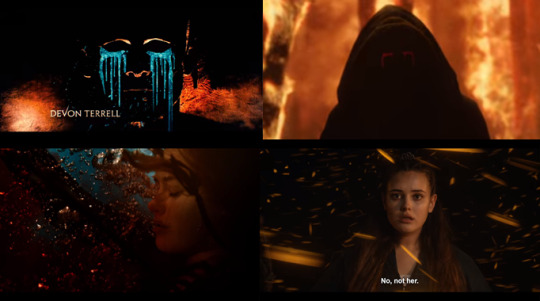
Long bit: Both characters are associated to the elements of water and fire individually through the environment/cinematography/colour pallet/colour symbolism, and then water and fire is mirrored between them. She is overall water, he is overall fire; but they also have a bit of the other in each other.
For Nimue this symbolism is often done through her environment, showing her connection to nature as the fey queen and that she does not hide who she is if she can help it. She does not hide externally, so her elemental symbolism becomes EXTERNAL.
Whilst for Lancelot though he is often surrounded by fire, the idea of water/tears is either symbolised through the fairy tale style of the artwork or referenced for him through his name as “the weeping monk.” Hinted at in his characterisation of guilt and self-loathing, the way other characters respond to him (”the one who cries”/”you see it all through those weeping eyes”). His main conflict is an Internal fight between who he is and who he needs to become, so a lot of his main symbolism surrounding water (and even fire as pertaining to magic - ashfolk - and not killing fey) is INTERNALISED, hidden, cut off from the Hidden themselves. Symbolic of him hiding his connection to the fey and that other side of himself, the “human” (morally speaking) side, and therefore hiding who he truly is… Lancelot.
For Nimue, fire means life. Being chosen and her magic saving people. For Lancelot fire means Death, his deeds, “the fires of hell” and the destruction of the “ash” folk and his heritage. He believes hell fire is his fate, going by the “even if I am damned.”
For Nimue, water means death. In the water she takes revenge, where that Paladin almost drowned her. Into the water she falls, where they think her shot dead by arrows. The water is her fate as the Lady of the Lake. For Lancelot, water means life. Tears, emotions, taking responsibility, feeling the weight of his guilt and mourning for the things he has done/lost. For him, water - not ash -means a second chance to be better. To put out the fires and heal.
Though in the end, for both of them, water & fire most of all represent death and rebirth.
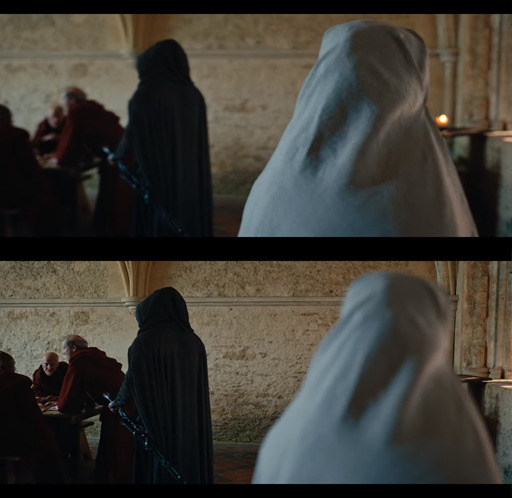
1x03
^If you don’t understand I can’t help you. ☯
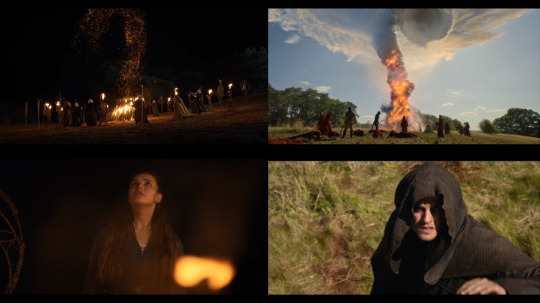
1x01 - 1x07
Now this one I found quite interesting. Remember that even if Nimue directed the second one, it is still the Power/will of the Hidden at play. (Or should I say the will of the Writers/director) Chosen? Mirrors? Night and Day? Fire… Embers to Ashes? We shall see, but I think it was definitely on purpose.

^I’ll just leave that here, the fuckers kept missing each other for an entire season (WHICH WAS ON PURPOSE THE WRITERS DID THAT ON PURPOSE just as an fyi). The fact that there is this much sexual tension, anticipation, mirroring, fate, destiny and chemistry between two characters who have never even mET should be ILLEGAL! They affect each other immeasurably without ever even meeting, so imagine what will happen when they do...? *pterodactyl screech*
Whelp there ye go. Under the next gif I also did a bit on the Teaser trailer, as that just fucked me up a bit I have to tell you! Up to you whether you want to continue digesting my mad ramblings or not. *Shrug* Thanks for coming to my TED talk guys– 😂 Somebody fucking smite me down like the eldritch horror of writing I am dear god think of the children…
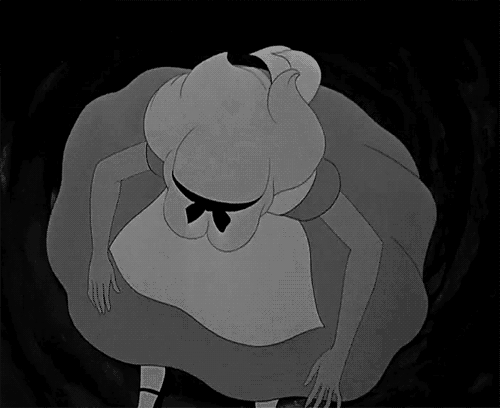
THE OFFICIAL TEASER TRAILER:

Arthur running for the Sword of Power, because you know, King Arthur.
“The Legend says…” The Legend of King Arthur and his Sword Excalibur/Caliburnus? The line is very meta, a reference to the in world legend that this story will create, but it’s also expecting the audience to be savvy of the actual legend of King Arthur and his knights. Both these ideas intertwined into one. Aka, the trailer expects us to have pre-decided expectations for the story we’re now being told, because we’ve already been told it before; this fairy tale of celtic myth/history. All the “spoilers” about Arthur, his lineage, Morgana, Guinevere, the Knights, even the lady of the Lake herself come with that knowledge. However…
Surprise surprise, the Weeping Monk (killer of fae)/ Lancelot (eventually Arthur’s most trusted KNIGHT) instead picks up the fae sword from it being embedded in the ground, subverting our expectation, it definitely fucking subverted mine, but not in a GOT way, in a ~good~ way. I was like, “Whosoever be this fine hooded fellow hath stole away both sword and my good sense!!! 👀”
Also harkening back to the legend of the sword in the stone (another expectation), which the action itself signifies that person be - as Merlin so eloquently puts - “The one true king.”
Ok… Symbolic wink wink nudge nudge towards his true nature (inside and out), saving Percival, potentially becoming the greatest warrior and protector of his people and eventually a Knight of the Round Table; and perhaps King of our Hearts??? Ok, sure thing “concept” trailer. I’ll bite.
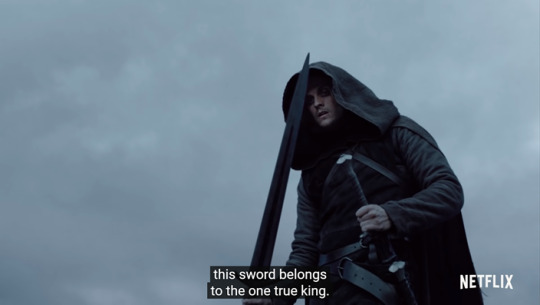
Ok… *deep breath*
WHOMSt the fUCK decided to frame (fae “ashman”) ?Lancelot? with the ~SWORD OF KINGS~ (also of fae origin) A N D the line…‘the one true king’ ALL IN ONE… instead of Arthur?
‘BELONGS to the one true King?’ Belongs, hmm interesting word choice… This done in a worms eye view shot meant to make the viewer feel like the character is above/superior/basically we’re kneeling before them? (Which I mean sure? but…) Hmm??? HMMM??? I don’t understand CONCEPT Trailer what is the CONCEPT you’re trying to get across? One hand on his paladin sword and the other on “fae hope” Excalibur I get, he has to make an important decision, one that will either save his humanity (and his people) or destroy it (them), yeah yeah sure that’s F I N E…
…but what about the “KING” SHIT HMMM?? Is there something you would like to share with the rest of the class? *sips tea whilst staring straight into the camera*
it may mean nothing don’t quote me
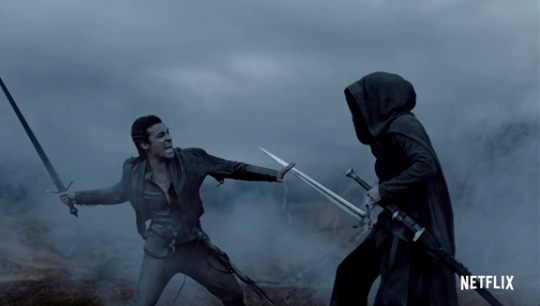
…Anwaaaay… We all know in a fight Lancelot can kick Arthur’s ass so that’s not whats going on here. Arthur is P I S S E D. They’re not just bog standard enemies here. I mean WPM kicking him in the ribs was pretty “fuck you” and they were just enemies there. In this instance the sword is in play, Weeping Monk has taken something from Arthur that he feels “BELONGS” to him - in this case symbolised by WPM taking “his” sword - and that’s making it personal.
“You stole my sword ya bitch!” And what is the sword linked to? Power? Sure. The right of being a King? Yep. And also a certain Queen… No no no, this is the Concept of rivalry. It shows that whatever relationship Arthur and his “Knight” will have in the future after all the “die die die” starts to sizzle down will - in its genesis - be a rivalry. Probably mirroring Gawain and Arthur when they first met to an extent. A rivalry for power? For something else? Who Knows!
*whistles innocently*

And down down down he goes. He’s FALLING. There are many metaphorical concepts associated to FALLING… Falling from “grace” (in the eyes of the Church)… Falling because he has a sky full of guilt crashing down upon him… falling for h… falling in Lo… into the Water!!!! Until he is completely submerged. Water, the idea of cleansing, of washing away who you once were/trauma/sins of the past so you may be reborn a better version of yourself. His old ideals are defeated, he submits to his true heritage and allows it to wash around him so he may begin to heal.
Though if we’re talking metaphors, water is - for obvious reasons - always associated with the LADY OF THE LAKE… Nimue. He has fallen into her world. (pss he’s gonna fall for the Chick in the Lake - I think - there ye go). Water is associated to memory/reflections and mirrors. And he is CRASHING through this mirror… This idea of reflections/mirror images is even more ironic when you’ve watched the show.
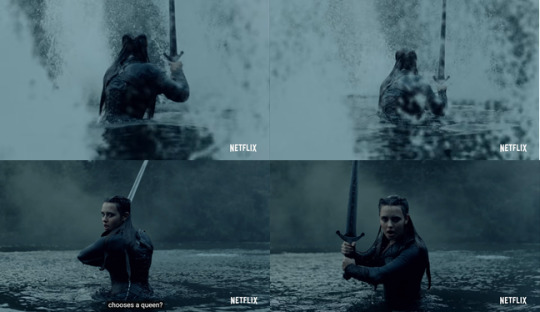
And as he falls beneath the water with the sword of a King, she rises out of it, with the sword of a Queen… Mirror mirror on the wall, who’s in the biggest shipping hell of them all? Either these two are going to be really good at relay, or there’s some conceptual significance here. The specifics? No fecking clue, will need to wait for a season 2! There is also some interesting use of Z~oo~m in this last bit, but I’m sure it’s pretty obvious to you all. Summary: just visually in a concept “teaser” trailer, the zoom in on them both, the reverse mirroring, the literal and symbolic visual of water and the Sword (of rulers) connecting them frames these two characters together, that’s just in the concept trailer. Links their legend together. TBH IT LITERALLY LOOKS LIKE LANCELOT FELL INTO THE WATER AND TURNED INTO NIMUE WHAT IS THIS GREEK SOULMATE SHIT I’M–
*calms down* This trailer and the show also definitely said to the original Arthurian Legend “RIP but I’m different.” I mean, Nimue is definitely not Lancelot’s mother figure in this one, that’s all I’m saying.
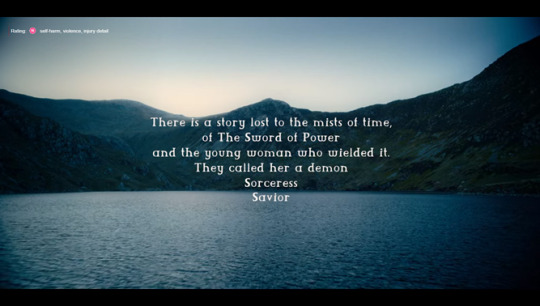
I think this legend might be a wee bit different 😉*cackles*
#nimulot#nimulot meta#nimue x the weeping monk#nimue x weeping monk#cursed spoilers#nimue x lancelot#my meta#mad mimir meanderingly mumbles#Tumblr is my only escape for this - I wouldn't go near twitter with a thousand foot pole if my life depended on it#where to begin? I don't think I'll ever get over that line - I die every time#my pupper was literally like 'mum what the fuck are you doing writing this shit give me LOVES'#also Nimue owns my heart if Lancelot doesn't marry her I'm going to thanks BYE#my shitty humour~~
1 note
·
View note
Text
TATBT Recommends: 'The Haunting of Hill House,' AKA, Spooky 'Parenthood'
"Ghosts can be a lot of things: a memory, a daydream... but most times they're just what we want to see."
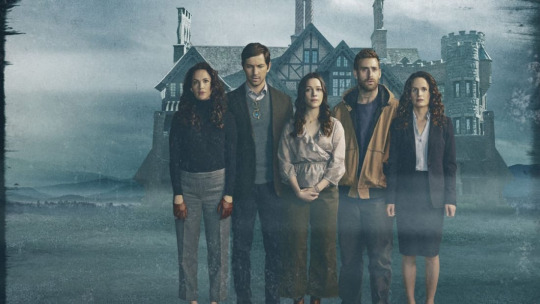
**This article originally appeared in the TATBT newsletter. No spoilers beyond the first episode!**
Steven Crain uses these words to undermine the idea of "real" ghosts in the earliest moments of this ghost story, immediately establishing himself as The Haunting of Hill House’s skeptical audience surrogate (although I trust that we are all much less of a drag than Steve, while simultaneously being just as hot as him).
Series creator Mike Flanagan then spends the next 10 episodes proving to us and to Steven, in the most frightening ways possible, that just because the ghosts of Hill House can be explained doesn't make them any less real — and no amount of logical explanation can rid Steven or his family of the ghosts that bind them together. Trauma is not logic-bound, and neither are the scars it leaves behind.
The Haunting of Hill House dropped on Netflix a week ago, and while I knew it would be an extremely loose adaptation of Shirley Jackson's fearsome 1959 gothic horror novel of the same name, I surely could not have guessed that the malleable nature of that adaptation would turn this haunted house story into what I've been referring to as...Spooky Parenthood.
And that’s a compliment. Prepare yourself for a gushing recommendation,; although I do discourage you from watching Hill House with the lights off, a full bladder, or in the near vicinity of anything that casts a shadow. The list of things that made me do a double-take, followed by a full 20-second stare down to see if they moved again include: the shadow of a sink faucet, every open door in my house, and the reflection of my own face in the TV when I finally turned Hill House off.
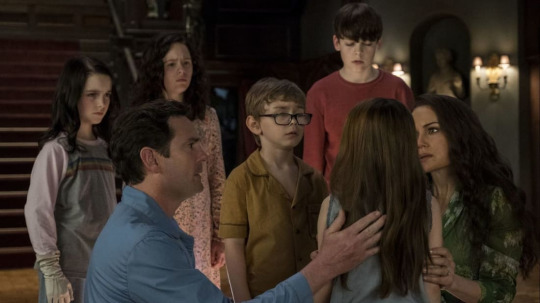
The Haunting of Hill House follows the Crain family at two different points in their lives: the summer when they briefly lived in a gorgeous, super haunted Victorian manor that was "born bad," and then 26 years later when a great tragedy forces them to reckon with the ways in which that house never left them, no matter how long ago they left it. The nonlinear nature of this family story might lend itself more glaringly to a This Is Us comparison, but the thing is...I'm the one making said comparison, and I think Parenthood is a far superior family drama to This Is Us.
And The Haunting of Hill House is, indeed, an excellent family drama. Who knew?! I love a good scare, especially around Halloween, so I set into Hill House expecting to do a little doom, make a little ghost, get scared tonight. All those things happened, but I also found myself crying repeatedly — a reaction to entertainment I both cherish and live in fear of. The cleverness of this series is that Flanagan understands that horror can be doubly horrifying when its rooted in care.
After getting to know the Crain family, you don't just want these people not to be tormented by ghosts because ghosts are the worst; you don't want them not to be tormented by ghosts because you care for them, in that same complicated way they care for each other in the midst of their own grief and tragedy.
The scares of Hill House aren’t just frightening...they’re sad. And surely there is nothing more frightening than despair. So the question remains: can you enjoy watching a series that asks you to repeatedly bare your second-hand soul in a sea of self-reflective human tears?
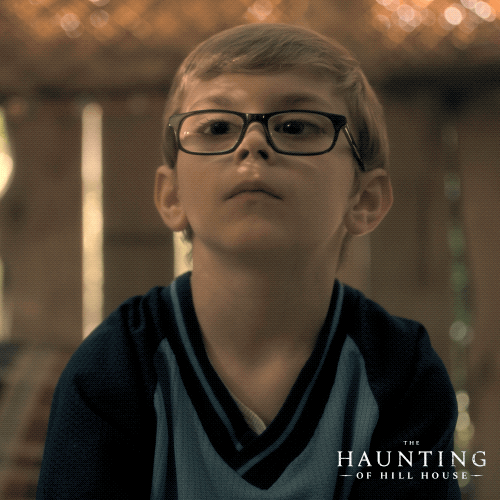
Parenthood and The Haunting of Hill House say yes you can, and you will probably love it all the more precisely because of that emotional connection.
With style and empathy, Hill House coaxes viewers into caring for a family who turn away from their shared trauma and mental health at every turn. It makes you care for them so hard, you won't even give up on them when those turns so often reveal floating men in bowler hats and long-haired ladies with disturbing 90-degree angles in their necks.
Because of that time spent cowering under beds and around corners with the terrorized younger Crains, you understand why older Luke would turn to drugs; why Shirley would build up walls so steep no one can get in; why Theo would give so much to her work and so little to herself; why Nell would find the allure of her mother's own mysterious demise irresistible in the wake of numbing personal tragedy; and why Steve...
Well, Steve is just kind of sanctimonious and rude, but he's an eldest child with a superiority complex, and when building a family drama, it's important to depict accurate family dynamics. We need look no further than Adam and Kristina Braverman to know that just because someone is annoying doesn't mean they're not bringing a necessary ingredient to the familial table.
Sorry oldest children. — signed, ME, an endlessly lovable youngest child; a more reliable Crosby, if you will.
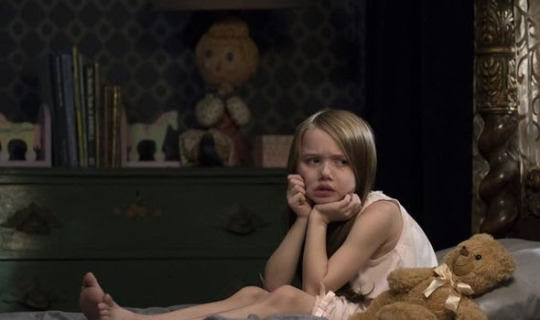
Of course, the youngest child in this scenario is Nell, a touch on the unreliable side because at only 6-years-old when her parents moved her to Hill House, she and her twin Luke were most vulnerable the spectral happenings within. A child cannot use logic or happenstance to explain away what's right in front of them — they can only see what's there. It's no surprise that being told what’s right in front of you is actually all in your head could leave psychological scars so lasting they'd lead grown-up Nell to...
Well, you’ll see.
If you don't like horror or earnestness, there's a good chance you won't like The Haunting of Hill House. But if you like even one of those things, this weird hybrid of a series might just sway you into liking the other. To call it "fun" would not exactly be correct on account of all the oppressive grief and sorrow and whatnot. But it thrills in that way only a truly spooky story can, and the family at its center is so thoroughly engaging.
Undoubtedly, life is a far more difficult journey for the Crains than it was for the Bravermans, but I am here to tell you, the healing that awaits them at the end of this battle is worth the fights and frights, if you’re willing to take the trip with them.
Oh that's right — this show is scary as hell and it gets a (mostly) happy ending. A few other helpful things to know going in:
THE CASTING
I've said repeatedly that Flanagan takes his time establishing empathy for the Crain family through recognizable sibling dynamics, and familial grief and devotion, but there is one thing he employs that establishes connection immediately...
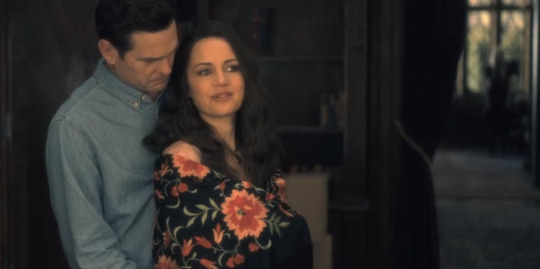
The Crains are all smokin’ gorgeous, starting with their parents played by Henry Thomas in a pair of spooky-but-whatever-I'm-into-it blue contacts and Carla Gugino who has been maybe the most beautiful woman in the world for like 20 years running. The woman does not age, she just spawns cute little versions of herself who grow up to be beautiful, haunted adult iterations of herself. And the only thing I like more than a group of unreasonably hot characters...
Is the perfect casting of miniature versions of those characters. Seriously, I know y'all like This Is Us, but eat your fucking heart out Mandy Moore's painted-on wrinkles. The kids in that show are cute and they bear a passing resemblance to their adult counterparts, sure, but look at this:
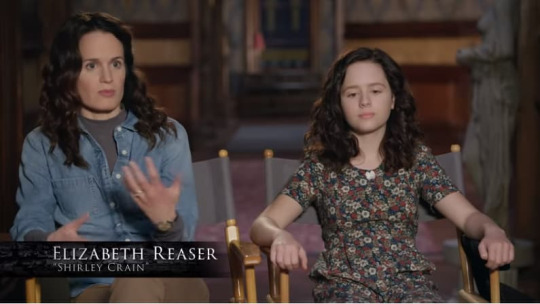
Elizabeth Reaser (grown-up Shirley) and Lulu Wilson (l'il Shirley and also Camille's ghost sister in Sharp Objects) look...exactly alike??? It is wild. And it just goes on from there...
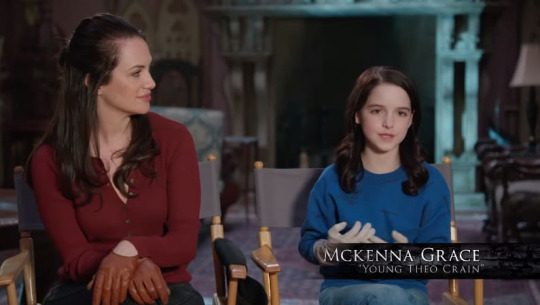
I've hardly even mentioned Theo, the coolest Crain sibling by far, played by the impossibly gorgeous Kate Siegel in full-size, and by the most prolific child actor of her generation, McKenna Grace, in fun-size.

I have mentioned Steve, but it's worth noting that much of his insufferable adult characteristics are assuaged by the fact that his younger self (Paxton Singleton) is a highly endearing little preteen nugget, and his older self is played by hot ass Michiel Huisman pretending to be a nerd by always carrying around a pair of lucite-framed glasses, but never actually wearing them.

And, oh the twins; these poor, poor twins who have just the most adorable faces, you can almost understand how a ghost would want to get all up in there for a squeeze. Given all these Honey-I-Shrunk-the-Actor magic tricks, it could only be intentional that tiny bespectacled Luke (Julian Hilliard who must have Jacob Tremblay absolutely shaking) grows up to be Oliver Jackson-Cohen who could legitimately play Captain America post-experiment.
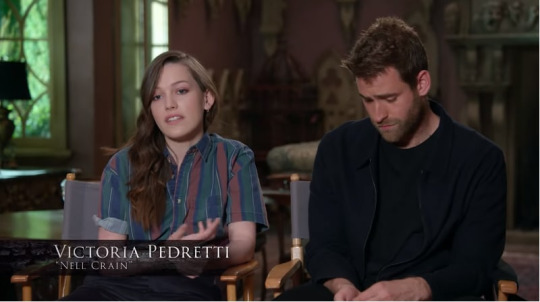
The camera spends a lot of its 10-hour run time zoomed-in on the face of little Nelly (Violet McCraw), so it's a delight every time you're struck once more by how much grown-up Nell (Victoria Pedretti) looks exactly like an enlarged version of her child self...even if every zoom of grown-up Nell is not a delight in and of itself.
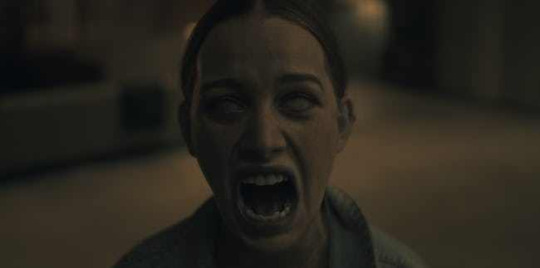
That’s from the first episode! It’s not a spoiler, really! You’ll just have to watch!
IT'S THE SUMMER OF 1992
The Mall of America is opening, Ross Perot thinks he should run for President, and the Crain family have just moved to Hill House with intentions of flipping it to make enough money for their "forever home." It's difficult to immediately tell what time period the Crains are in when they move into Hill House because Olivia, the warm but occasionally possessed Crain mother is prone to swanning around the drafty mansion in velvet robes and wedges.
So, sometimes you might feel like it's 1970, but knowing from the beginning that it's 1992 could be helpful to your viewing experience.
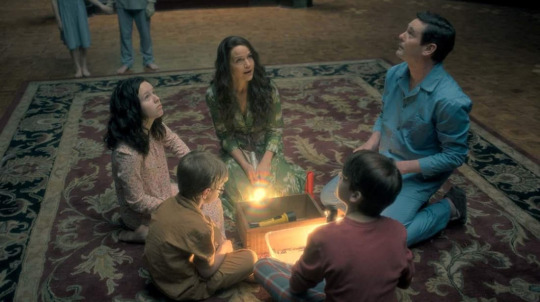
The present-day timeline is 26 years later, and this will make it all the more curious as to why they brought in Timothy Hutton to play a 26-years-later Henry Thomas when Timothy Hutton is only 10 years older than Henry Thomas, but...should I just show you the young-and-old Shirley comparison again, and what say we forget all about this misstep??
THIS IS EPISODIC TELEVISION
The first five episodes of Hill House are building blocks, each one told from a different Crain sibling's perspective. I don't normally like to say this because it can make a viewer hyper-aware of their own viewing experience, but you gotta stay vigilant when there are ghouls peeking out from every dark corner anyway, so here goes: Just give it a few episodes! You might not find yourself enthralled in the first one or two, but the build is so enjoyable along the way. Y'know, if you find secondhand suffering and personal terror enjoyable (I doooo).
And once you make it to episode 5 — Nell's episode — you might not shake it for days. I certainly would not recommend watching it right before bedtime or in any sort of rush. I can think of few other entertainment experiences so suspenseful and conclusive; so terrifying and moving all at once.
And that emotional climax makes the perfect entry point to the marathon that is episode 6, which plays out like a stage production in only five continuous shots, the longest one running 17 minutes straight.
youtube
And this is where I warn you that some people who have loved the series have not loved the final episode. I am not one of those people because I'm sappy as hell and I love a perfectly tied ribbon around an oozing, molding, rotten, terror-wrapped package.
No, the emotion-heavy resolution of Hill House is not subtle, but family resolutions rarely are. They take time, and work, and they cannot be passive. Deep wounds — cuts that have been kept open for a lifetime — must be healed with intention. The ghosts that have haunted the Crain family for decades haven't disappeared by the time the final credits roll, but acknowledging that they were ever there in the first place is comfort enough.

Get more recaps, recommendations, and rundowns from the These Are the Best Things newsletter -- your one-stop shop for pop culture!
SIGN UP FOR MORE TATBT RIGHT HERE!
#the haunting of hill house#haunting of hill house#theo crain#luke crain#nell crain#shirley crain#steve crain#hill house
28 notes
·
View notes
Text
Secret-Diary’s Annual Awards Show, 2018
Here we are. Xmas is over for another year and the last dregs of 2018 are circling the plug-hole of time like inedible week-old gravy. Soon, the drain-unblocker that is New Year will be emptied on top of it, disposing of it forever… and nobody will be very sorry. It’s always possible that, in the last four days of the year, something incredible will happen. Maybe Will Self will invent time travel and go back to the early 1600s to become Shakespeare. Maybe Theresa May’s face will swing outward like a poorly-secured cupboard door and reveal an electric aquarium where a panel of Sea Monkeys control all her movements and decisions. Barring both of those two events, however, I think its safe to say that 2018 was a complete write-off.
Mainly, this year has felt like an unnecessary and unwanted continuation of 2017. 2017: Part Two, if you like. Brexit continued to drag on like a wounded moose looking for a place to die. The idiotic decision to cast Whittaker as Doctor Who, made in 2017, was enacted here in 2018, causing waves of uncontainable ennui to sweep a nation. The Space Elevator still remains resolutely unbuilt and Elon Musk (mankind’s Token Sensible Person) doesn’t seem overly inclined to do anything about that just yet. In short, we’re standing at the far edge of a year that has been, by and large, a complete and total waste of everyone’s time… especially mine. I’d normally leave my End Of Year Awards for New Year’s Eve or New Year’s Day, but fuck it. Almost everything else this year has been vaguely disappointing, so let’s stick to the theme. We’ll ejaculate these awards out early and get it over with. You all know how this works by now: I make up some tenuously-related categories and proclaim a cultural event or piece of media the winner according to the dictates of my own diseased logic and the voices in my head. Let’s just crack on.
THE AWARD FOR BEST DVD OR BLU-RAY RELEASE Normally, I try to make the category names funny, but the best DVD/Blu-Ray released in 2018 was the remastered Hitchhiker’s Guide to the Galaxy Boxset. Somebody cleaned up a six-episode sci-fi show from the 1980s and stuck a bunch of special features on it and it was instantly better than anything actually produced in the present day. That’s funny enough in itself, assuming you find cultural atrophy funny.
THE INSTANTLY-REGRETTED WANK AWARD FOR BEST MOVIE STARRING A SEXY FISH MAN … Goes to The Shape of Water, which may actually have come out last year. I also really enjoyed Aquaman, too, but I can’t pretend it was a superior piece of film-making. You know what, though? The fact that there are two movies about sexy fish men having non-conformist adventures says something important. It says “OUR CG ANIMATORS HAVE FINALLY FIGURED OUT HOW TO DO WATER, SO LET THE GOOD TIMES FUCKING ROLL!”
THE BERNIE MADOFF AWARD FOR MOST SUSPICIOUS DISCREPANCY … Goes to Doctor Who’s score on Rotten Tomatoes. Yeah, you knew you weren’t getting through this drivel without having to listen to my opinions on Doctor Who again, so let’s just get it out the way early. Critics gave the most recent series of Whittaker-flavoured Who a 94% rating. Fans gave it 31%. So people who can’t risk saying something culturally unacceptable because they could be fired loved it, while people who cared enough to review it unpaid and had no consequences to fear fucking loathed it. Let’s try not to blame Whittaker, for this though. It’s actually Chibnall’s fault, with his determination to minimise the sci-fi elements in the world’s most beloved sci-fi show. And the BBC’s fault for hiring Chibnall. And all our faults for not dragging every single BBC exec into the streets and whipping them to death years ago. Jodie Whittaker casting was a point-scoring ploy on behalf of a cynical organisation desperately trying and failing to be progressive, but never forget that it’s just the tip of an iceberg made of frozen penguin shit.
THE SPECIAL AWARD FOR RUINING AN ENTIRE NATION … Goes to Donald Trump, who is a fucking arsehole of truly unprecedented proportions. At the time of writing, he’s currently throwing a massive temper tantrum and has shut down entire branches of government just because the real politicians won’t give him the money he needs to build his preposterous, unworkable and illegal border-wall. Thanks to this one pathetic tool’s incalculably large ego, America is currently in a state of abject chaos.
THE AWARD FOR MOST NEEDLESSLY HARROWING TV SHOW Did you see The Haunting of Hill House on Netflix? If not, congratulations: you might need slightly fewer anti-depressants than people who did. A spooky romp through the lives of people who used to live in a haunted house turns into an uninterrupted misery binge when it starts digging into their feelings. One of them is a drug addict, one of them is depressed in a dangerous and unstable way, one of them has issues with intimacy, one of them is a writer reliving his own miserable past for a living and one of them is a straight-up, 24 carat arsehole. Oh, and they all sort-of hate their beleaguered father for not saving their mother (who was mad as a tin of pigeons) from Death By Ghost. Thanks, Netflix. 2018 wasn’t a deep enough well of despair already.
THE AWARD FOR MOST UNDERAPPRECIATED HUMAN BEING … Goes to Jeremy Corbyn, who spent his Xmas dispensing broth and socialist good-vibes in a soup-kitchen. He’s constantly attacked and ridiculed in the media… possibly because the British media isn’t used to dealing with high-ranking politicians who aren’t psychopaths. Also, he once accidentally high-fived Dianne Abbott's tit, thereby gifting the world the most entertaining five seconds of television in history.
THE NAKED BRIAN COX AWARD FOR MOST BEAUTIFUL THING EVER … Goes to Sapphire and Steel, a TV from the 70s that I recently rediscovered. Trying to explain it in normal English will undoubtedly make me sound like a man whose brain is slowly eating itself, because it defies all ordinary conceptions. Nevertheless, I’ll try. It’s about two elements from the period table who are also people from a higher dimension who handle anomalies in space-time using methods that make perfect sense but aren’t necessarily clear to the audience. This prevents entities that often manifest as patches of light or shadow from breaking into time from outside and stealing people or feeding off the resentment of the dead. Make sense? Well, it will when you watch it, and you absolutely should watch it.
THE NAKED STEVE BUSCEMI AWARD FOR MOST EYE-GOUGINGLY HORRIBLE THING EVER This is actually a tie between that time Theresa May attempted to dance and… pretty much the entire year itself. If 2017 was like watching a man fall off a cliff, 2018 has been like watching him hit every outcropping of rock as he plunged downwards towards a merciless ocean.
THE AWARD FOR MOST SLATHERING BETRAYAL OF A FAN-BASE … Goes to Fallout 76, which, by all accounts, turned the bleak, lonely world of Fallout into a perfunctory MMO with all the beloved series’ characteristic and recognisable features sucked out or watered down. A great game series screwed over in the name of chasing casual gamers. Oh, when will the industry learn. Never. The answer is never.
THE SHATNER AWARD MOST DRAMATIC OVERREACTION TO AN UNDERWHELMING SITUATION … Goes to the UK tabloid ‘news’ papers, who went into swivel-eyed paroxysms of outrage and confusion when a handful of drones brought air traffic to a halt at Gatwick Airport almost a week before Xmas. They squealed angrily about how ‘possible terrorism’ and how Xmas had been ruined for thousands of people (despite the fact that they were perfectly entitled to just get on other flights a day or two later). It later turned out that there hadn’t necessarily been any drones, and that air traffic had been brought to a standstill because the police got confused and mistakenly thought that there were.
And that’s more or less it. Lots of other things happened in 2018, but I never made any concerted effort to remember them, beyond noting that they were all pretty bloody stupid. Roll on 2019. I have no reason to believe it will be any better than 2018, globally speaking, but maybe I’ll finally buy a copy of Red Dead Redemption 2 and stop caring.
4 notes
·
View notes
Text
Queen of the Underground
Yet another installment in the Chasing Ghosts story verse. Tasha’s used to wrestling with her past, but once in a while it wins.
Warnings: past abuse, alcohol use, self harm, vomiting, hurt/comfort,
She’s old enough to know better, she tells herself as she draws the edge of the blade over pale flesh. Tiny pinpoints of red well up in its wake, and she begins a new line, perfectly spaced in the series just below the crest of one pointed hipbone. Old enough to know better means nothing and she should be well aware of it by now. Old enough to be on her own. Old enough to live without well intentioned (or not so much) adults trying to tell her what she should be doing. There’s the independent living coordinator, checking in once a month to make sure she’s still breathing, but she’s good at hiding the bottles, covering the scars, and keeping her few possessions tidy enough that she looks a model case. A model for deceit, but a model nonetheless. Nothing to see here, folks. Nothing at all.
Her cell chirps, the ridiculous digital noise that means James is checking in on her. Tasha doesn’t think he buys what she’s selling these days. He didn’t when they were kids, either. She can still hear the click of the flimsy bedroom door lock giving way to an unfurled coat hanger when he heard her crying through the wall in their foster home. She’d tucked herself underneath the bed before he got it open, and he lay on the floor with one hand inches from hers while he talked her through the panic attack that trapped her under that bed for the better part of an hour.
The tone sounds again as she finishes another fine line with the blade. He’s persistent. She’ll give him that. She reaches for the phone and scans the messages. Steve’s cooked some sort of meal and they want to know if she’s hungry.
Thanks, but I’m good.
Most days, she’d agree to come over. Pretend in their game of happy family and sit at their table for a meal. Today isn’t most days. Today, her mind won’t stop spinning and she’s jumping at shadows. It happens sometimes, and she suspects it always will. She finishes the lines on her hip, ten, perfectly spaced, shallow, stinging just enough to remind her she’s capable of feeling. It doesn’t make sense, never has, but it’s been her security blanket since she was a terrified kid waiting for father of the week to leave her mother’s bed and come to hers.
Want me to swing by in the morning for a run?
James is definitely not buying it. If she refuses this offer, he’s going to know something’s wrong. She agrees, and they set a time for him to be there shortly after dawn. The hyperactive danger signal in her brain is still going full tilt, and there’s a bottle of bourbon under the bathroom sink calling her name. She takes it out, drinks from it deeply, and carries it along as she moves to the tiny little living room of her latest temporary home.
Most of the bourbon later, even if it’s not exactly silenced the panic is at least slurring heavily. Probably she should go to bed and sleep it off. But that invites the nightmares, and she’ll be right back where she started. She finishes the last few shots and drops the bottle in the recycling bin. Responsible and normal adults have recycling bins. Its presence in the kitchen means she’s doing just fine. Even if it is mostly filled with diet soda cans and long necked glass bottles.
In lieu of sleep, Tasha settles for marathoning Netflix on the couch. She’s somewhere in the middle of yet another episode of who even cares what when her eyes drift closed.
She wakes to the damn chirping noise. The room is gently spinning, and her mouth tastes like something particularly foul died in it quite some time ago. Fumbling for the phone puts her stomach somewhere in the general region of her sternum, but she swallows hard and ignores it.
You coming out?
Ha, wouldn’t that be fucking funny. Nope. Nope. Nope. Not doing that. Wait. No, it’s not like there’s actually a closet labelled “I survived a very shit childhood and I really don’t like being vulnerable so let’s just not okay?” Her head is fucking pounding. Or maybe the door. Yeah, definitely the door. She’s slept through her alarm, four messages, and one missed call from James. This is going to end very well indeed. She decides to go let him in, and the gently spinning room decides to knock her on her ass. The phone is still in her hand and she hits his number in hopes that calling him will make him stop beating on the door.
“Tasha? Jesus, child, where are you?”
“Let yourself in,” she tells him. “I think I fucked up.”
The door opens a moment later and she’s once again glad she told him the code. He’s on his knees beside her before she can fully process why she’s glad of it, though.
“Talk to me,” he orders, hooking his hands under her armpits and hoisting her upright and back onto the couch.
“Bad day. Night. Just bad,” she admits, and he nods.
“I see that,” he says.
She means to say something, but she hiccups instead and presses her fist to her lips. James pulls her to her feet and hauls her to the bathroom before she adds hurling on the carpet to the list of stupid shit she’s done in the last 24 hours.
She’s gripping the rim of the toilet when she hears James swear. She lifts her head just enough to see what he’s removing from the counter. She left her blade on it. A little butterfly blade, sharp as fuck and not a little bit incriminating. She can’t spare much effort to consider it, though, because her throat is on fire with the acid that is intent on escaping. It hurts. She’s so nauseous and all she’s managing is gasping for air around the flames. She brings one hand to her lips, but before she can get her fingers to the back of her throat James has her wrist in his hands and is yanking it away.
“Stop that shit,” he tells her. “Your nails are too long, you’ll tear yourself to bits, child.”
She shakes her head, whining before losing another scalding belch. He doesn’t understand. It’s easier if she’s in charge. It hurts less. It hurts faster. It doesn’t matter. Her body finally does what it needs to, coiling up and knocking the breath from her as she chokes up what feels like an endless supply of bourbon and bile. James is patting her back, one hand still coiled around her wrist and she can’t keep her balance. She falls against the forearm that’s still hugging the toilet, tears streaming as she retches again.
Somewhere in there, James shifts, moving behind her and bringing both arms around her body, keeping her steady and cupping her forehead in his massive palm. Everything hurts, and she can’t stop heaving long after she’s dry. There’s not enough air in the room, and she can’t get it into her lungs even if there was. He’s saying something, but the roar of her pulse in her ears drowns him out. There are bright white bursts of light at the edges of her closed eyelids, and it doesn’t matter anymore.
She comes around to James wiping her face down with something cold. Wet. Her overtaxed brain can’t quite supply her with the word for what exactly she’s being washed with. She blinks, hazy vision tilting and mostly focusing on the side of the sink. She’s half propped against the edge of the tub and half against James. Close enough to the toilet to reach it, far enough away not to drown in it. This, her brain can manage. Not the name for the, yeah, washcloth. Wonder where he found one? She keeps them under the, oh that’s not good. They’re under the sink. With the bottle of antiseptic, stacks of just in case gauze, and a couple more bottles of bourbon.
“I’d welcome you back, but I don’t think I trust you to stay yet,” he tells her when she manages to lift her head to look at him.
“Fuck,” she grumbles.
“More like fucked up. Jesus, Tasha. You’re still drunk as shit, child. I think you’re actually sweating alcohol.”
She wants to offer something smartass, but she lurches forward over the toilet instead, spitting up nothing but making a solid effort nonetheless. James is holding her up, and she’s gotten so used to the arm that isn’t an arm it’s begun to feel comforting, to press herself against it and let him hold her close. He’s telling her to breathe, counting her down and putting one hand just below her collarbones, reminding her to slow down. He doesn’t tell her it will be okay. James is the only person she knows who has never lied to her.
“Shhhh, Tasha, shhhh,” he murmurs, and she tries, she does, but he’s right. She is still drunk and she can’t stop the tears now. She wraps her fingers around the fabric of his shirt and gives up trying.
“Can’t do this,” she whines, and she hopes he understands because that’s all the words she’s going to be able to string together while she clings to him and falls to pieces. There on the bathroom floor, she bawls herself to sleep while her brother holds her and whispers that he’s not going anywhere.
#alcohol#vomiting#emeto#natasha romanoff#james barnes#AU - foster care siblings#chasing ghosts universe#past abuse#self harm#hurt/comfort#amputee bucky barnes
10 notes
·
View notes
Note
Ur the only bitch in the house respect. Seriously though, I saw TLJ and liked better than Tfa because I appreciated it more because i like a bold fuck up more than a safe rehash. But then I saw it on netflix and I had the thought, 'does lf not want me to care about the resistance/rebels?' because if they didn't then quite frankly that's how you'd do it, all the 'failures' boil down to either wanting to kill the ppl viewed as space nazis to hard or being 'too compassionate' and even after (cont)
them being reduced to what? a a couple dozen? they’re all standing around chill like they just broke for a meeting break around a water cooler. meanwhile the big bad who’s gonna be that for at least im betting a third of the finale is on his knees crying. i know its supposed to be ‘crime never pays’ or whatever, but seriously, they’re down to a single ship, they’re potential allies said ‘lmao no’ and the biggest source of funding just got blown up. they’re gonna win and we know that but the /narrative doesn’t even pretend otherwise/. and i thought, oh god maybe it is as shit as everyone says. but then you gave me hope but I still have one remaining fly in soup so to speak. There’s gonna be a ST after the ST and we all know it. It may be 20 yrs or whatever but it’s coming. So how do you idk rationalize the idea of integrating the shadow of the empire with the need for there to be an enemy for the war of the warry stars? stormtroopers are ~iconique~ and it was always the biggest stumbling block I had to the stormtrooper revolution. Why would any company worth its stock swap out an instantly recognizable and marketable baddie for idk some other cgi alien army or whatever? love to hear ur thoughts and thanks.
Thanks, anon, those are some really great points!

Yes, I am a bit frustrated with the way the good guys™ of this trilogy are depicted as - as a collective because obviously we felt for Paige Tico - virtually invincible, getting not one but two jedi ex machina to get them out of the problem. Maybe I should mention that while I use the ex machina term quite extensively, I don’t consider it a bad move by default - sometimes a lightning from a clear sky can have its dramatic beauty. What is frustrating is when a situation is clearly not hopeless yet the text insists it is only solvable by supernatural intervention, as, imo is the case with rock lifting Rey. TBH, when the resistance run into the rocks blocking their way, my first thoughts were huh, they can blast their way through, maybe a shot from MF will clear the way, or maybe we’ll get some teamwork scene where all the members will combine their forces to quickly deal with the problem. But no, we got Rey lifting rocks with the force and being amazed at herself lifting rocks and resistance also being amazed by her lifting rocks and Luke crying joyful tears at the thought of her lifting rocks - and in result the only character I actually felt for was the man who was faced with his holy murderous uncle basically praising the girl, to whom he offered a galaxy, for dumping him, as practically everyone else in his life did. This is some very human venom that gets spit in the I’ll destroy her and you and all of it line.
But still, I insist the screenwriter who also came up with the You’re nothing but not to me line which is still being analyzed 8 months later and also manged to give a beautiful and satisfying end to the journey of one of cinema’s icons, isn’t oblivious of the contrast between those two scenes and bordering on emptiness lightness of the political subplot. Just imagine how much satisfying the rock lifting would have been if we have seen Rey simply fail at anything before this scene - for example, if before taking up the ls to train she wasn’t training with her staff only, exactly, trying to put rocks on top of each other - and failed and then picked up the ls in frustration. Then her “apotheosis” at the end would feel much more earned and it’s really basic rules of storytelling I point out, so it’s not a matter of Rian Johnson being Fellini and Antonioni and also my countryman Roman Polański all rolled into one only a good movie making craftsman that he is to figure this out. Of course, there is much symbolism and subext to this scene but again - the subtext and symbolism in the overall movie point out to an ending more complicated than gratuitous dragon slaying.

Ending the whining and turning to the actual question - what about future installments? Well, first of all it is very possible that next trilogies will be perhaps closer to usual action based movies, maybe not completely dropping the deeper psychoanalitical symbolism but also not operating on it like the Skywalker saga has been and should be so till the end. It very often seems to us that once we finish the psychoanlysis all our problems will disappear but that’s really not the case - it may be that they’re only about to commence. TBH, I was fully prepared for this trilogy to drop the jungian elements, since RotJ could technically be the end of individuation - Luke reconciled his father’s self and shadow, as well as understood his own shadow. So when tfa’s opening crawls informed me the new villains are actually old villains revamped I felt almost disappointed - only to be positively surprised by one of the stormtroopers turning out to be trilogy’s hero. Still, after tfa itself I was inclined to think creators were just too lazy to come up with something new and maybe are giving some commentary on neo-bad things springing up across the globe. But tlj and additional materials made me think that they really have something new to say about the conflict. Ex-imperials were exiled rather than reintegrated or even imprisoned, galactic history kept Anakin Skywalker and Darth Vader seperate entities, finally Anakin’s denied shadow was directly complicit in his grandson’s fall - all that reeks of repression and the more I thought about it, the more sense it made. Because Leia would, and as it turned out did, find it much harder to deal with her father’s memory than Luke, as it wasn’t he who was held still to watch his whole planet get blown up - and yet it was Leia who passed the Darth Anakin genes on, so obviosuly she would have to deal with her father someday.
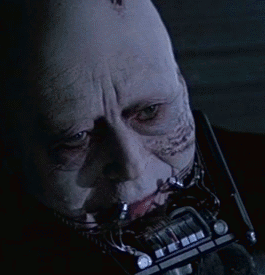
Tell your sister you were right, the actual last words Anakin has ever spoken, take on a brand new meaning now, don’t they?
But perhaps more importantly, as far as storytelling and marketing are concerned - the real question isn’t why should they drop iconic villains only how long can they actually keep up the same villains without them losing all dramatic value? Aside from the movies repeatedly employing storytelling devices to keep us unworried about the heroes, that’s the main reason why the political conflict in this trilogy is so emptily obvious, or at least, as I hope, seems emptily obvious. Now, of course, you never really expect villains to win in kids’ movies but a new villain is always someone that needs to be introduced, recognised, have his methods and motives exposed - and that iteself makes the story more interesting. A new villain is someone heroes need to learn, adjust to and this is what triggers their own inner journeys as well as tells the audience something new. Rebels and empires are basically angels and demons at this point and how may times can you watch white clad blondes with circles vanquish red-and-black clad brunets with horns as you know there’s no way it won’t end this way? Empires are Star Wars equivalents of Daleks and let’s face it it’s the Weeping Angels that scare us now, Daleks we just want to exterminate our sadness.

also dr Who bases on time travel so linear storytelling doesn’t apply
The only type of villain that can stay the same for who knows how many episodes is the mastermind with a secret organisation who always sneaks away - but no massive political-military organisation. And even they finally become their own parodies.

I should add, Solo very positively surprised me in this aspect - actually I would say it’s the Stories that keep me so optimistic about this trilogy, what with Galen Erso, Saw Guerrera and imperial officials from a Forman movie - with their depiction of crime syndicates. Dryden Vos isn’t your usual chaotic neutral criminal that’s still lesser evil than evil empire - it’s he who used up Enfys’s people resources of coaxium, yes, to sell them to the empire, but it was still he who was responsible. This really makes me think Disney-LF has some wider vision of the GFFA - and there are more potential for conflict there than just angels and demons RRR and Hugo Boss uniforms
And to wrap up, don’t forget our beloved turtle like helmets I can’t be the only one who always thought of turlte shells looking at stormtoopers? technically started as the good guys - so it’s possible we’ll keep their iconicness.

9 notes
·
View notes
Text
My Fictional Character obsessions as depicted in gifs
My obsessions from age ten onward as depicted in gifs. Some of these characters have alternated in cycles over the years. The ones with the * next to them are ones that have stood the test of time or are particularly strong obsessions. I am not posting them in a particular order, that would take too long to sort out and may change depending on my mood, however the current strongest obsession is at the bottom.
Ladies and gentlemen, I present to you my fictional character obsessions through the years... Or as Tumblr calls them... My “Garbage children.”
Note: I know only some of them count as “garbage children.” So please don’t be offended that I may have called your favorite character a garbage child.

Rumplestiltskin as depicted in the show Once Upon a Time, particularly seasons 1 through 3.

*Loki from Norse mythology and Marvel comics. Tom Hiddleston is a great actor but I felt I should note that the MCU version is slightly disappointing, I wish they wouldn’t downplay the magick and try to pass them off as “alien.”

*Dracula. There are many depictions of Dracula that I am fond of / obsessed with. Fred Saberhagen’s Dracula books for example, The Frank Wildhorn Dracula musical, and a few movie and TV versions.
I love the 90s Dracula TV series even though he’s blond in that (not to be confused with the awful NBC show version from the twenty teens) but I have no Gifs of the 90s one. Nor do I have any gifs of Rudolf Martin as Dracula in Buffy or Dark Prince: The True Story of Dracula though I love that one. But here’s the most recent version to feed my obsession. Dracula of Castlevania (The Netflix series). Look at that Adorkable vampire!
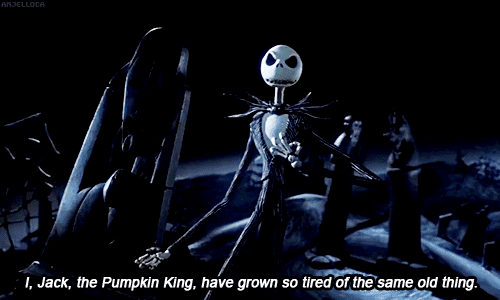
*Jack Skellington of Nightmare before Christmas was one of my first truly all-consuming obsessions. I played the cassette of the soundtrack to death. I had a shelf of the toys (which were actually rare in the early 90s). I became fixated on Danny Elfman’s singing voice as well as the gorgeous and haunting visuals.
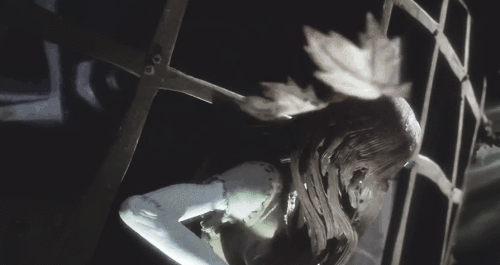
Sally, who helped kindle my first Frankenstein obsession because until then I had never seen an intelligent Frankenstein monster. I hadn’t yet learned that in the original novel he was articulate (once he learned how to speak) and intelligent, and did not have a flat head or neck bolts. Sally and later The Bride (1985 movie) eventually got me to read the novel and pointed me in the right direction.

The ORIGINAL Peter Vincent from Fright Night, as played by Roddy McDowell. I loved his character growth. I loved watching him go from cowardly pretender to being the hero he always pretended to be and still having that B movie cheese to him. Peter Vincent is my favorite vampire hunter. Named after two of my favorite horror movie actors. Peter Cushing and Vincent Price.
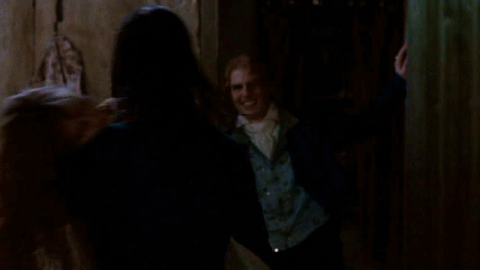
Lestat. Yes, I went through an Anne Rice obsession in my teens. What 90s teenager didn’t?

The Dresden Files TV series, particularly Bob The Ghost AKA Hrothbert of Bainbridge as played by Broadway great, Terrence Mann. Though short lived I loved that snarky ghost and this introduced me to the book series. It was also the first TV series I enjoyed after my mother passed away so it has a special bittersweet place in my heart.
Another ghost character I love but I have no picture for him is Captain Gregg from the novel, movie, and TV show The Ghost and Mrs. Muir. And Patrick Stewart as The Canterville Ghost from 1995 (as well as the original Oscar Wilde Story).
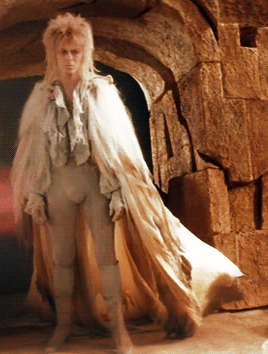
Jareth from Labyrinth (and David Bowie). Does he need an explanation?
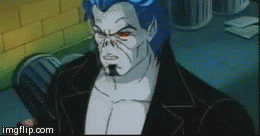
Morbius from Marvel comics. Because I just loved that emo SOB.

Nick on Forever Knight. I went through an emo vampire phase in the 90s, okay...
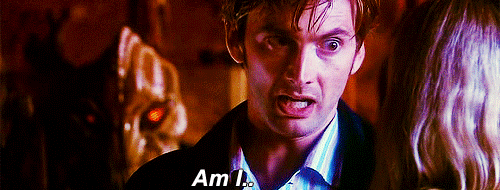
The Doctor on Doctor Who

Methos from Highlander the series. Highlander the series was a LOT better than people give it credit for. And Methos was the first fictional character with a truly dark past I had ever seen, who mostly became a decent person after years of penance and self analysis. It was through Highlander that I finally saw fiction and characters with shades of grey and realized things aren’t always black and white. When they revealed Methos’ dark past I was so worried it was an excuse to kill him off and show that he was secretly evil all along but no. They didn’t do that. Highlander taught me just how much people CAN change. And it also taught me a lot about history and inspired me to be curious about our world and its past. (It also often helped me with Social Studies tests.)

Frank Langella as Dracula.

Faust from Goethe’s Faust. (The 1926 silent film is the most faithful adaptation and actually covers Faust and Faust Part 2. Most adaptations leave out Part 2).
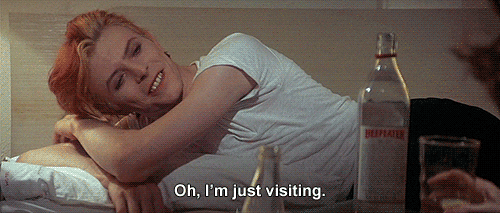
Thomas Jerome Newton from The Man who fell to Earth. Movie and novel by Walter Tevis. Yes, depicted in the movie by David Bowie... You’re lucky Bowie doesn’t turn up more in this list than he already does.
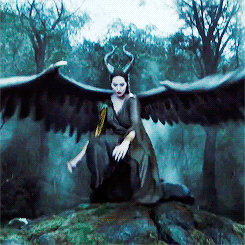
Maleficent. This one is kind of a guilty pleasure...

As a long time book lover (One the first books I remember reading and loving was In a Dark Dark Room by Alvin Shwartz at age four...) Belle from Disney’s Beauty and the Beast was the first Disney Princess I truly related to.
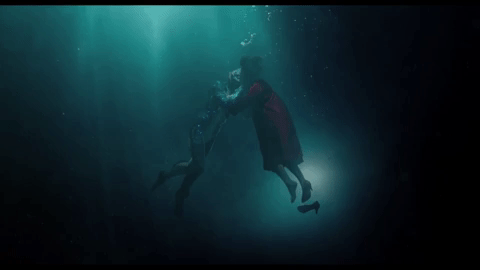
Elisa and “Charlie” from The Shape of Water.

The Beast / Prince and Belle in Le Belle et la Bete original 1740 novel and the 2014 French film (even though that film isn’t all that faithful and Belle is a little cold, I love the visuals).

*Luke Goss as the Frankenstein Monster from the 2004 Hallmark mini-series of Frankenstein. The most faithful adaptation of the novel to date. Woefully under-rated. Note, this spot is for the literary character too.

*Puck from Shakespeare’s A Midsummer Night’s Dream AND Disney’s Gargoyles. I love that little bastard.

Mina and Dracula in Bram Stoker’s Dracula (1992 film)

Emily The Corpse Bride. Also pretty much anything scored by Danny Elfman gets a slight nod here. I love that man’s music. It just catches me. And I always can tell when it’s one of his scores (And no, I don’t think they all sound the same). They’re just so beautiful and haunting.
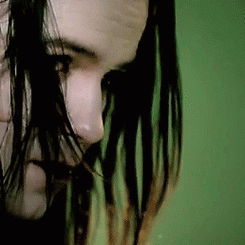
The Frankenstein Monster in Penny Dreadful. The second most accurate to the novel. They even go the eyes right.

The Real Ghostbusters animated series. Egon is what inspired me to want to study parapsychology. I loved the nerd characters in shows like this.
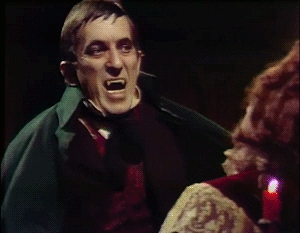
Barnabas Collins in the original Dark Shadows. And 1990s version. And Doctor Julia Hoffman, a surprisingly empowered character for a 1960s TV show, which is why it annoys me that more “modern” versions always make her sexually obsessed with Barnabas or a villain or both whereas in the original show she was Barnabas’ closest confidant and even the one Barnabas cried out for whenever he was in trouble. (Admittedly it took hundreds of episodes for them to develop that dynamic but they got there).
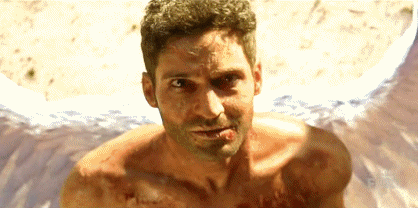
Lucifer. TV show incarnation and Sandman comics incarnation.

Cain and The House of Mystery (The House of Mystery counts as a character)

*Morpheus from Neil Gaiman’s Sandman. My current biggest obsession. I’m making up for lost time. This is something I SHOULD have been obsessed with in my teens. I’m thirty-six-years-old and was thirty-five-years-old when I read it for the first time. Why the Hell did no one describe this thing well to me back in the 90s!? Yes, Sandman started when I was only seven-years-old but it was most popular in the mid-90s and I would have probably loved it if I only really knew what it was all about. Instead it was always “He’s like a Goth Jareth” (which almost worked) and “You’ll love Death! She’s so cute!” (which totally didn’t work at all...) Don’t protect me from spoilers, damn it! Tell me about his character growth, the gorgeous artwork, the horror hosts residing in The Dreaming, tell me about the mythology and Shakespeare references, the lore, tell me about the ambiance, the atmosphere, the humor and pathos. For God’s sake, I SHOULD have loved this thing a LONG time ago!
You’d be amazed how hard it is to find a gif of Morpheus- he’s never had a film or TV adaptation but there are fan films! (The gif is from The Sandman fan film, 24 Hour Diner).
________________________________
Honorable mentions:
Lydia from the Beetlejuice animated series (My mother’s best friend often compared me to her but I think I had a crush on the character...)
Xena: Warrior Princess (when I figured out I’m not entirely straight). Though I think I liked Gabrielle a little more than Xena, herself.
The mermaid in She-Creature (2001 film, not the black and white film of the same name)
The Crypt Keeper from Tales from the Crypt.
Carmilla (vampire novella and Hammer horror film The Vampire Lovers)
Duncan Macleod from Highlander the series.
Various characters from Buffy The Vampire Slayer (TV series) including Buffy herself, Giles and Spike.
Doctor Strange (And in relation to that, Doctor Craven from the Vincent Price movie The Raven from 1963.)
Bruce “David” Banner in The Incredible Hulk, particularly as depicted by Bill Bixby. Though that was more of a role model personality type that I saw as a truly good man in a bad situation.
Dorian Gray from the Picture of Dorian Gray
Elisa in Disney’s Gargoyles but I idolized her more than obsessed about her. There is a difference.
The reason those aren’t properly on the list is because those aren’t precisely obsessions but just characters I happened to really like a lot.
#Sandman#The Sandman#Neil Gaiman's Sandman#Danny Elfman#David Bowie#Lucifer#Lucifer Morningstar#Dresden Files#The Dresden Files#House of Mystery#The House of Mystery#Dracula#Count Dracula#Bram Stoker#Anne Rice#Mary Shelley#Fright Night#Peter Vincent#Cain#Cain The Caretaker#Dark Shadows#The Real Ghostbusters#Gargoyles#Disney's Gargoyles#Puck#A midsummer Night's Dream#Shakespeare#My obsessions#Once Upon a Time#OUAT
8 notes
·
View notes
Text
BBC/Netflix Dracula’s Behind-the-Scenes Set Secrets
https://ift.tt/3eYLfrL
Contains Dracula episode 1-3 spoilers
Bela Lugosi’s aside, Castle Dracula can often be a let-down, says Arwel W Jones. Tasked with creating his own take on the Transylvanian fortress for 2020 three-part adaptation Dracula, the production designer rewatched countless versions of the story. “You’d see this magnificent castle from afar, and then, due to budget restrictions I assume, you’d end up disappointed by the interior. As you get closer to the front door and the entranceway, it always tended to be a slightly smaller deal.”
For the BBC/Netflix series written by Steven Moffat and Mark Gatiss and starring Claes Bang in the title role, Jones had to make the castle a big deal. “Scale was one of my mantras. I wanted to convey the scale of the castle, to give a sense of awe, and then for it to carry on inside with a feeling of unease.”
The exteriors were already there, thanks to filming at Orava Castle in Slovakia, a location for 1922 silent film Nosferatu. Inside, it took a monumental dragon-shaped staircase, candles in their thousands, skulls, taxidermy, and some extremely clever design work to conjure up the vast and unsettling world of the Count.
Unveiling Easter Egg secrets and tributes paid to other famous screen horror, as well as one or two links to Gatiss and Moffat’s Sherlock, here’s how it was done…
Celebrity Portrait Artist
Mark Gatiss is a man of many talents. The co-writer of Dracula and actor behind Frank Renfield (the Count’s thrall and, in this version, lawyer), is also an artist whose love of horror finds expression on the canvas. In preparation for Dracula, Gatiss showed production designer Arwel W Jones a portrait he’d painted of Peter Cushing in character as Hammer Film Productions’ Doctor Van Helsing.
“We thought we’d put it in the castle,” says Jones. “And then we thought it’d be nice to put one of Mark’s portraits in each of the big sets – the castle, the boat and the Harker Institute. He had to do a lot of work behind the scenes!” Four paintings by Gatiss ended up on screen in Dracula, each of an actor from a previous adaptation of Bram Stoker’s novel: Peter Cushing, Christopher Lee, Louis Jourdan and Bela Lugosi. Cushing can be seen in episode one, next to a castle stairwell Johnny is running through. Christopher Lee is hanging on the walls of The Demeter in episode two. And Louis Jourdan from the 1977 BBC Count Dracula is on display next to the portrait of John Heffernan as Johnny in the Harker Institute.
Another fun portrait fact: the faces of production designer Arwel W Jones and art director Harry Trow also found their way onto screen in Dracula. “One of our scenic artists, Jeremy Duckham, is a very, very talented portrait artist, and he did them all, including me,” says Jones. “In the back of shot in the Castle Dracula dining area, you can see me in a red smock as an old cousin of Dracula’s, the count of somewhere, it was based on so-called folklore of a cousin of Dracula. And on the boat, you might notice the face of our art director Harry in that painting as the Tsar!”
Here Be Dragons
Credit: Arwel W Jones
“The name ‘Dracula’ comes from the word ‘dragon’, so that’s why we seeded dragons all the way through,” Jones tells Den of Geek. “There are no elephants this time (a reference to Jones’ favourite animal, which found its way into several Sherlock sets), because it’s all dragons!” Look closely and you’ll see a repeating dragon motif on the door of Dracula’s carriage and on the Count’s ostentatious signet ring. It was designed by “little genius” Richard Wells, the graphic designer who created a series of Dracula family crests evolving through the centuries for the battle standards hanging on the castle walls.
There are also two stone dragons flanking the fireplace and a stone dragon’s head emerging from the lower wall. One of the fireplace dragons is currently standing guard next to Jones’ front door, he laughs. “It does help with deliveries, being able to say ‘it’s the house with the dragon!’”
One feat of dragon-related design is in Castle Dracula’s monumental staircase, which mirrors Wells’ family crest design. “The tail of the dragon is actually the same spiral as the staircase,” explains Jones. “So if you look from the top shot, the head of the dragon on the wall on the grand staircase is actually in the same position as the head and tail are. It’s another reflection of the same logo.”
Stairway to Hell
The design for Castle Dracula’s impressive staircase had been in Jones’ head for a while, just waiting for the right project. Its inspiration? The Vatican Museums in Vatican City, Italy (see ‘Here Be Dragons image above). “The way you leave the Vatican Museums is this Fibonacci spiral staircase, so when you stand at the top, it spirals downwards but inwards at the same time,” Jones explains. After visiting the museum, the image stayed with him. “When the offer of doing Castle Dracula came along, it just felt right, to spiral upwards and outwards for the entrance way, because you’d then have a central point where Dracula would come down the stairs but it would widen out as it went up, which would give you that sense of scale as you went up, and you’d be able to look up the tower.”
The Vatican museum version doesn’t have the Gothic skull motif in the stone balustrades, laughs Jones. “Theirs is a bit more high-end! I like my skulls, they tend to drop in everywhere. I wanted the interplay of light and shadows, to create that sense of unease for the viewer.”
A Tribute to Hannibal Lecter
Hanging high above Dracula’s dining table is a striking antler chandelier, which Jones included as a specific nod to another great horror icon: Dr Hannibal Lecter. “I hadn’t long binged Bryan Fuller’s Hannibal show, where there was a lot of antlers and death and rich colours,” remembers Jones. “All those two-hander scenes between Hannibal and Will, in my head, were mirrored by the scenes between Jonathan and Dracula – the kind of hunter and prey idea.” When set decorator Hannah Nicholson showed him the antler chandelier (imitation, but they look very real), Jones thought it the perfect hat tip to Fuller’s Hannibal.
Dragon’s Den
Detail credit: Arwel W Jones
Just because a vampire wakes up in a new century doesn’t mean he won’t want to surround himself by reminders of home. Dracula’s flash London pad in episode three ‘The Dark Compass’ was designed to echo his castle. “Once I started playing with mirroring what we had in the castle, it started to come together,” says Jones. “I had the window where the fireplace was, as far as the dining table was concerned, then the entrance opposite, then we dotted things around that reflected what was in the castle – artwork, sculptures – things to replace the suits of armour.”
Read more
TV
Sherlock 10th Anniversary: Behind the Scenes Set Secrets
By Louisa Mellor
TV
Dracula episode 1 review: a comic retelling with gusto and scares
By Louisa Mellor
One particular nod to Castle Dracula was so subtly done that even episode director Paul McGuigan didn’t spot it. “I’d mentioned to Paul that I wanted to get the dragon in there and he really wasn’t sure, so I didn’t tell him that I put it in the stands for the table,” Jones laughs. “I got Rebecca Gresham, my draughtsperson, to do a very, very abstract version of the dragon’s head in profile and then we divided it up into two shapes and got a lot of sheets of plywood cut out in those two shapes and then sandwiched them over and over to give us that profile.” On set, Jones pointed it out to McGuigan. “The fact that he hadn’t noticed meant it had worked – subliminal, better than in your face!”
Man in the Mirror
Part of the mythology established in the BBC/Netflix Dracula is that mirrors show ‘the truth’. For the Count, mirrors work as a kind of ‘picture of Dorian Gray’, so that when he looks into one, he sees his real self – a centuries-old monster and not the handsome man seen by the rest of the world. That’s why the glass-artwork and reflective surfaces in Dracula’s apartment are all broken up, says Jones. “Like the big window, they’re all disguised. In his reflection, he could see the real thing, rather than whatever people see, so that was a horror to him. It was all about breaking up reflections rather than seeing one very clear image.”
The rest of the apartment design was about grandeur of scale and opulence, says Jones. “Where would this centuries-old warlord live in London? There was nothing out of his grasp, he could get whatever he wanted.” While Castle Dracula was all about creating a sense of unease, this was about creating a sense of his comfort. “He was quite happy in this space. Dracula’s happy in the 21st century! They have a little joke about him putting weight on because the food comes to him, he doesn’t have to go hunting!”
Here Comes the Sun
Another repeated motif across Dracula’s two homes is his obsession with the sun. “Throughout the castle, there were lots of references to the sun because of his fascination with it and the fact that he’s not seen it in centuries. Our scenic artists painted a few bits of artwork that had the sun rising over the castle and various things to do with sunrises and sunsets, to reflect that.”
One monumental tribute to the sun was found on the wall of the Count’s modern-day apartment. “The big gold-leaf sun is a five-piece artwork made from separate canvases to divide it up. We gave the artists a few different references – a mixture of Gustav Klimt and some amazing Japanese artists.”
Scarface Easter Egg
Detail credit: Arwel W Jones
Unless your TV is higher-definition than the Hubble telescope, you won’t have seen this on screen, but it was there. In episode one, on the wall of the convent chapel where Dracula beheads the Mother Superior, is a stone tablet engraved with a Latin carving: Dicere Salve Ad Amicus Meus.
“When we film in real locations, especially in chapels, sometimes you have remembrance stones or things with real people’s names on, so we have to make something to cover them up,” explains Jones. “Because I’d done a little gag in Sherlock many years ago – at the end of ‘A Scandal in Belgravia’, when Irene Adler is about to get decapitated and Sherlock rescues her, there’s a gun on the back of a Toyota pick-up truck and on the side of the truck it says ‘Say hello to my little friend’ from Scarface in Arabic – I got them to do a Latin version of the same line. The gag was that there was a big gun on the pick-up truck, and in this scene it was Dracula with a big sword.”
Another movie reference came in the form of the wallpaper (an Arwel W. Jones speciality!) at the flat of Harker Institute scientist Jack Seward. “It’s another nod towards being uncomfortable and uneasy,” says Jones, “and a little tribute to The Shining.”
Mark Gatiss specified a particular sequence from cult director Roger Corman’s back catalogue as the reference for Dracula’s theatrical vision in episode two (there’s a definite The Fall of the House of Usher feel). “This was meant to be a nightmarish set-up due to the fact that he was being poisoned. It was all about those silhouetted trees. The blood on the floor was my idea, to give those perfect reflections. It was quite a feat to be honest with you!”
And finally, who spotted the name of the AD 72 laboratory at the Harker Institute and saw the link to the cult Alan Gibson-directed Dracula Hammer picture?
There is No Baby, Johnny
The feeding machine Jonathan Harker discovers on his manic exploration of the castle was built according to detailed specifications from Steven Moffat’s script. “He’d had this idea in his head of these feeding bowls where the brides were trapped in boxes and he was feeding them on different things in order to see what would happen, as an experiment. There’s flies in one, rats in another and obviously, the baby in the third…”
The baby is a grotesque highlight of episode one – first introduced unseen but squirming and squalling inside a carpet bag as Dracula deadpans to his houseguest that “there is no baby, Johnny.”
“There are some videos that may come to light one day of us doing various things to try and get that bag to move like there’s a baby in it,” laughs Jones. “It was very funny. We had electric drills with things attached to them, some of those baby doll toys that crawl along the floor, we had little jumping toy dogs…”
Dracula’s Cell
Director Paul McGuigan’s original mood board for episode three included a picture of a silhouetted Dracula within a lit triangle, an image recreated for the night club scene, lit by lasers. “Triangles were a theme throughout episode three,” explains Jones. Dracula’s triangular cell was designed as a reflection of that – thematically and literally. “By having glass in three walls, it means you get lots of refraction and reflection with lights without them necessarily reflecting straight back into camera, even though I’m sure the cinematographer Tony [Slater Ling] would say it’s an absolute nightmare to light,” laughs Jones. “It did look great in the end, because every little light we had on the walls pinged around everywhere.”
The Game is Afoot!
With Sherlock and Dracula both written by Steven Moffat and Mark Gatiss, produced by Hartswood Films, and employing many of the same creative teams, a little bit of one was bound to bleed into the other. In addition to Sister Agatha’s “I have a detective acquaintance in London” reference to the man himself, some costumes found their way across the border. Costume designer Sarah Arthur recycled the coat from Martin Freeman’s Victorian John Watson look from Christmas special ‘The Abominable Bride’ to use in Jonathan Harker’s travelling outfit. Look closely at the photograph Harker takes out of the zombie boxes and you’ll recognise the wedding dress as that worn by the Emelia Ricoletti, the titular bride herself.
Not only that, but look at the kitchen units at Bob and Katherine’s house in Dracula episode three, and you might recognise them as formerly belonging to a landlady of Baker Street. “You recognised the kitchen?” asks Jones. “It’s Mrs Hudson’s kitchen!”
cnx.cmd.push(function() { cnx({ playerId: "106e33c0-3911-473c-b599-b1426db57530", }).render("0270c398a82f44f49c23c16122516796"); });
Dracula is available to stream now on Netflix. Design detail photos courtesy of Arwel W Jones.
The post BBC/Netflix Dracula’s Behind-the-Scenes Set Secrets appeared first on Den of Geek.
from Den of Geek https://ift.tt/34os1Zf
2 notes
·
View notes
Photo

‘Douglas’ Goes Deep Inside the Mind of Hannah Gadsby | Rolling Stone
All stand-up is curated confession, a chance for the person behind the mic to spill their guts but still shape their own narrative — to both tell the audience a story but also let us know how we should be thinking about it. We appreciate great comedians for their humor, of course, but also for their mastery. Like mentalists or con artists, stand-ups know how to pull our strings, how to put us at ease or discomfit us.
No one has had more occasion in recent years to think about the structure of stand-up than Hannah Gadsby. The Australian comic made waves in 2018 when Netflix released Nanette, a special in which she publicly processed her trauma about instances of sexism, assault, and homophobia she’d experienced in her life, all while deconstructing and questioning the format of joke-telling as a way to tell stories about ourselves.
Nanette earned Gadsby both admirers and haters in droves, as any thoughtful and provocative piece of media will in this age of instant public reaction. She went from being a comedian mostly familiar in her native Australia to an international household name, known as a woman who either revolutionized or took an ax to the art form. So it’s only natural that she opens her follow-up special, Douglas, by discussing how this new set will inevitably live in the shadow of her last one.
“If you’re here because of Nanette… why?” she asks her Los Angeles audience early on in Douglas. “What the fuck are you expecting from this show? Because, I’m sorry, if it’s more trauma, I am fresh out. Had I known how wildly popular trauma was going to be in the context of comedy, I might have budgeted my shit a bit better.”
Though nothing since (Douglas included) has quite gone to the places Nanette took us, other innovative stand-ups have been messing with the format in interesting ways since 2018. Gary Gulman experimented with documentary as a means of circling the topic of his depression in The Great Depresh; Jenny Slate meta-critically dissected her own fears about public performance in Stage Fright; Julio Torres utilized tiny objects and a mini conveyer belt to discuss his identity in My Favorite Shapes; and Lil Rel Howery related the story of his uncle’s funeral in a high school gym in Live in Crenshaw. As the diversity of comedians whose work makes its way to the TV-watching public broadens and more stand-up specials get released each year, so too does the format stretch and evolve to accommodate a wider range of both stories and tellings.
Douglas is in many ways a more traditional special, what Gadsby jokingly calls “my difficult second album, that is also my tenth.” But like its predecessor, Douglas is interested in pulling back the lid to see the structure of stand-up; the comic spends the first 15 minutes offering an outline of what we should expect, including “a lecture,” “the joke section” and “a gentle and very good-natured needling of the patriarchy.” (It’s not gentle; more on that later.)
But what might appear at first glance as a list of spoilers is actually Gadsby’s roundabout way of offering insight into how her brain works. Because where Nanette was about the comic unpacking old baggage, Douglas is about a more recent revelation in Gadsby’s life: her diagnosis with autism. Douglas is Gadsby’s attempt to acclimate the audience to her own inner weather system, inviting us into her thought processes and teaching us her own language of personal associations. (She memorably describes a time in school when a lesson on prepositions devolved into a young Gadsby very seriously asking her teacher to explain how a penguin could be related to a box.)
If you’re already a Gadsby fan, odds are you’re very much here for her brand of puzzle-box comedy, the kind that laughs at its own deconstruction. As in Nanette, Gadsby takes aspects of herself that are left of perceived center — her queerness, her femaleness, and, in this case, her neurodiversity — and invites viewers to realign their perspectives. “I’m not here to collect your pity,” she says. “I’m here to disrupt your confidence.”
If this all sounds a little heady for a stand-up special, don’t worry — Douglas is also very funny. Named after Gadsby’s dog but also for a pouch located between the rectum and the uterus in the female reproductive system (don’t worry about it), Douglas covers everything from an awkward interaction at the dog park to Renaissance art to the Teenage Mutant Ninja Turtles. A portion of the set in which she tears antivaxxers a new one — and points out that there are probably a sizable number of them in her audience, overlapping as it does with “rich, white, entitled women” — hits in a powerful way in this time when certain people are refusing to wear masks in public in the middle of a pandemic.
Gadsby also devotes plenty of time to eviscerating that cause of so much collective grief, and the font from which most of her haters spring: the patriarchy. Just like in the real world, toxic masculinity lingers in the wings of Douglas: men telling women to smile, the male gaze in art, men (quite literally) asserting their dominance over women’s uteruses. If your reaction to this topic is that you’re tired of hearing about it, Gadsby would shoot back that she’s tired of living with it.
Gadsby spent much of Nanette questioning her own career-long reliance on self-deprecating humor. In Douglas, she lets us in on the way her mind works not to mock or undermine herself, but to revel in the way she, as an autistic person, experiences the world. “There is beauty in the way I think,” she says near the end of the set.
It’s likely Douglas will earn Gadsby as many hate-tweeting detractors as her last special did, if only for the fact that a woman getting up onstage to talk unapologetically about herself still makes a portion of the population very uncomfortable. But if Nanette was a dirge, Douglas is ultimately a celebration. So, in the words of Gadsby, “If that’s not your thing, leave. I’ve given you plenty of warning. Just go. Off you pop, man-flakes.”
#hannah gadsby#douglas#nanette#hannah gadsby nanette#hannah gadsby douglas#rolling stone#jenna scherer#stand up#comedy#tv#tv review#television#comedy review
0 notes
Text
Writing is Writing it Over Again

(Fox’s The Orville, which takes its cues from many sci-fi series) Every writer—if you’ve written long enough—knows this moment: the moment where you’re watching a movie, or perhaps just reading a book, and there it is. Your story. Your idea. Your character. Your dialogue. Not that it’s been stolen from you, but you both lucked on the same source of inspiration; they just beat you to it.
For me, it was a situation—a humorous moment that two characters found themselves in, which led to very awkward dialogue that made the situation even funnier. And I had imagined it all. Some contextual details aside, it was more or less the same scene, with quite similar dialogue, though with a slightly different conclusion. My story—almost my words. And now I couldn’t use them. Or I could, but it would forever be in the shadow of the previous work, which would lead to a profoundly guilty conscience.
Even if I did pass it off as my own, the internet is keen to point out unoriginal premises, such as when a recent (and very clever) episode of The Orville borrowed an idea from the show Black Mirror. Comment after comment accused the show of plagiarism, of being derivative, of how much better the “original” was…though, sadly, that idea was not coined by the writers of Black Mirror, and must have been used in countless science fiction stories over the years (for those interested, check out The Orville, Season 1, Episode 7, “Majority Rule”). Indeed, with the encyclopedic knowledge of the average fan, as well as the endless database that is the internet, why would anyone want to risk writing a story that might be—that will be—that already is a copy of a copy of a copy?
But is it a copy if you’ve never seen the original? Certainly it’s not plagiarism, but if you luck on a story that borrows ideas and twists from another show, or a story now out of print for 60 years, should you hastily withdraw from the scene with a desperate mea culpa? If so, then where would the apologies end? The simple truth is that every story is an act of unconscious plagiarism, borrowing the essence of a thousand stories that preceded it. Characters are traded like faded playing cards, used year after year in a kindergarten classroom. And plots—well, they’re like faces, which repeat in an endless loop, making a hundred year-old photograph or a five hundred year-old painting look like your best friend’s mother.
Let’s face it, the very act of writing is derivative, since self-expression goes back to the very idea of history itself. We tell stories to be remembered, and to remember ourselves. In general, we all want to remember the same things: acts of love and heroism, moments of greed and sacrifice, and the five or six dick jokes that never get old (even Shakespeare enjoyed them). With so many books telling so many stories, most of them more or less the same, is there really any reason to keep going? In the past, when books vanished through war or were devoured by time, it made more sense: books had to be replaced, stories needed to be retold, particularly when so much literature only existed in the mind’s and voices of nomadic storytellers.

(The forefather of borrowed plots, revisited characters, and dick jokes). In the 21st century, however, nothing gets lost: a hundred years of books are jockeying for space in used bookstores, while a hundred million more are waiting to be downloaded, with new ones published by the second (or milisecond). It is the nature of literature to help us remember, but how many reminders do we truly need? Aren’t a hundred thousand—even a million—books sufficient to jar our memory of the basics: that we’re human, we’re flawed, we’re capable of the greatest evils and the greatest triumphs, and we love a good dick and fart joke?
The same question has been asked throughout history; no doubt the Sumerians (who invented pretty much everything known to man) asked themselves, “haven’t all the songs been sung? What more could any human say about his or her adventures?” After all, Gilgamesh not only fought all the monsters on earth but also stormed the Underworld to rescue his best friend from the jaws of death. What more could you conjure up for a sequel? So if we drained the well a good five or six thousand years ago, shouldn’t we throw in the towel? It’s not like we’ll ever be at a loss for good books, and there’s more authors than we could ever discover or five or six lifetimes devoted solely, and slavishly, to reading.
The answer is a surprisingly simple one: storytelling is an art. And all art is a language, something that must grow and develop through speech and intercourse with the world. If we stopped writing words themselves would grind to a halt. We would probably stop reading, too. Once books become museum pieces, something we once did when we had more to say, they will no longer seem relevant. The beauty of art is that it’s a living conversation: we all add to it, even by reading and discussing it with others (particularly those of us in college, since college is an embodiment—even a metaphor—of the process of art).
The struggle of art is to find new ways to keep it relevant and meaningful to a new generation. We do that, largely, by writing new books on old themes; old characters in new worlds; timeless love affairs with modern mores. The story remains the same, but the readers are ever-changing. Even to read a book changes what it was, since every new generation reads with fresh eyes and different voices in their heads. Writing a new book based on a timeless folktale makes us read the original anew. We see how the modern author interprets it, and writes it into existence by a careful act of addition and subtraction. This doesn’t negate the original or exalt the revision. They exist together, like father and son, mother and daughter, or better yet, siblings; they both share the same DNA, even if it speaks a different language.
In fact, one work can help us translate the other—and we can go in either direction. Too often, we’re taught to see works as existing in a vacuum, each one “original” or “derivative,” and the greatest works betray the greatest originality. But this isn’t necessarily the case. Both Shakespeare and Chaucer pilfered nearly all their plots, carefully cherry-picking through the annals of Greek and Italian literature for the ripest fruits. To be sure, they took these threadbare plots (some of them very homely) and built them into towers that could be seen for a thousand generations. Even Chaucer’s most original creation, The Wife of Bath, tells a story of King Arthur that was second-hand in the 14th century.
At its heart, writing is more a response than an act of creation, so the more you know the conversation, the easier it is to write. Shakespeare wanted to write poetry, to create dialogue, to make audiences laugh; why waste time concocting an original plot that might do none of these things, when he had Boccaccio or Ovid for inspiration? In this sense, we’re the luckiest generation of writers: for we have everything to draw from. Every writer who ever drew breath, every story, every poem, every play, every biography. All we have to do is find the best ones (and they’ve been carefully curated for us by generations of scholars and critics) and write a love letter in response.
The best works, after all, are affairs of the heart, written not to this or that person, but to the works we first fell in love with. Look at the recent Netflix smash, Stranger Things, which is almost scholarly in its homages to every great 80’s horror and science fiction film large and small. To me, nothing is more Shakespearean: give the audience what it wants, but remind us why we want it. Once you figure that out, the rest is just taking dictation.
But be warned: taking something apart is much easier than putting it back together. We can easily see how a Shakespeare play is composed of iambic pentameter and a plot of mistaken identities; but trying to make it sing is alchemy of a higher order. Perhaps that’s the real reason we keep writing in defiance of time and an increasing volume of books: to convince us that it can actually be done, by mere mortals, writing against time and advancing senility.
#amwriting#academia#writing#stranger things#the orville#writing process#shakespeare#writing advice#writer's life
7 notes
·
View notes
Text
Self-Isolating With Friends: 11 Best Movies to Watch During Quarantine

With the state of the world these days. Making it even easier are programs like Zoom, the digital meeting application, that allows for any number of people to interact with both voice and video at the same time. So even if you aren't with them in person you and all your friends can have a virtual movie night! With no limit to how many can partake in the fun, because we all know how much of a bummer it is being the one that has to sit on the floor. You've already brought your friends, now we'll tell you what the best movies to watch with friends are. Teamwork!
Lights. Camera. Action
Depending on the tastes of who is in charge of movie night there is a great selection of movies to watch with friends, no doubt something for everyone. It is probably unlikely that something too serious or too depressing will want to be chosen though. Movie night should be an escape, something we enjoy, not something to remind us of the stress we are going through! Taking Time to Feel Good and Laugh it Off 1. Mid90s: Made in 2018 this is a total love-note to the 90s, hence the name. It is a coming of age film set in skateboard culture. The forming of self-identity and what forms who we are is quickly established here. It would be a great choice as a sort of unifying throwback film. While not all of your friends may be skaters the culture of the 90s is something that would be reminisced about. Not fully comedic but not fully heavy drama. It's a time that everyone will recognize in their own lives. The vibe can recall "Kids" from 1995 but is nowhere near as explicit. 2. Evil Dead 2: This will top the list regardless of how many years pass since its release. There is no requirement of watching the first and there is no concern should any of the bunch be particularly worried about a scare. This film is what camp films aspire to be but can never achieve. Sam Raimi basically invented the game here with Bruce Campbell. Simply put, the main character Ash has traveled with his girlfriend to a cabin. When there he discovers an audiotape with recordings from a book of ancient texts. He plays the tape and it unleashes a number of demons that torment him. Don't worry, it's intentionally hilarious. 3. Isn't It Romantic: This film has nearly every single Romantic Comedy trope that that genre could throw at you, somewhere in it. It is a satirical film that is making fun of that genre while still kind of being one at the same time. Great watch when you need a feel-good movie that isn't too overly cheesy. Rebel Wilson as the lead was made for the undervalued Architect that eventually comes into her own by the end of the movie. It's one of the roles that feel weird if someone else would have been in it now that you have watched it cast the way it was. Recommend it, especially if you are a person that isn't afraid to laugh at yourself and your tastes sometimes. 4. What We Do in the Shadows: Before there was the tv series on FX there was a film directed by the immensely talented director Taika Waititi. While we are distancing ourselves at these times, these characters are coming together. For those unfamiliar, it is a "reality" documentary about four vampires from different areas and different eras coming together to live in a home on Staten Island. If they can come together and live in unity we certainly can! The mockumentary style ends up being very quotable and perfect for a group of friends to share with each other and in a movie night setting. We Aren't (Actually) Alone. 5. Castaway: You know, even Tom Hanks had to deal with a form of social distancing or isolation of his own kind and all he had was a volleyball named Wilson. He overcame that challenge and was stronger for it. A movie like this can remind us that even when we feel most alone we can still find it in ourselves to be our strongest and make it through a hard time. Plus, who doesn't love Tom Hanks! 6. The Revenant: When you have the film that Leonardo DiCaprio finally achieved his oscar for, you know that it is a winner. This film speaks to the emptiness much like the selection below, "I Am Legend". Survival after an event, leaving us worn and ravaged. Sometimes this is literal, in the physical sense and sometimes it is figurative in the emotional sense. Hugh Glass (Leo) had more of the physical but who is to say his tundra isn't our empty streets. 7. I Am Legend: Another beloved name staring here, Will Smith. He is a scientist that is the lone survivor of a man-made plague, turning humans into mutants. He lives in and wanders New York City hoping to find other possible survivors. As he is immune to the plague he has been working on a cure for the disease. There are parallels for the time we are living in although a much scarier situation. But we can see how he, again, deals with isolation. Watching Will Smith live in that type of environment, expressing how it really feels being that alone is almost therapeutic. With the added benefit of being a great sci-fi movie (based off a great book!)
A Themed Night of the Best Movies to Watch With Friends
Make a game out of it or even better a theme out of it! Movie marathons are great too. But the fun of making up a theme or finding ways to make it into a game adds another layer to the mix. A great example would be "Comic Book Movies". These days the comic book hero movie have become less the outlier and more really fun movies to watch with friends. Another direction to go would be a time period like: Welcome to The 80s John Hughes was the king of the 80s. His films are clearly products of the 80s yet have a charm that has aged well. Dedicate a night to that charm, showing that movies both new and old make great viewing parties. 8. Sixteen Candles: Let's be honest, can there be an 80s night without Sixteen Candles? I suppose it could be possible if it were swapped for Pretty in Pink. 9 out of 10 times this is the first movie that comes to mind when John Hughes is mentioned. The coming of age comedy featuring Molly Ringwald another member of 80s royalty. As a teen dreading her 16th birthday and the standard social anxieties already coming with highschool. Having to deal with the romantic interests of one boy she is interested in and rejecting another (typical nerd!) she wants nothing to do with. 9. Breakfast Club 10. Ferris Bueller's Day Off: Another of the universally loved greats of the 80s. So much so that the National Film Registry selected it for preservation because it was deemed "culturally, historically, or aesthetically significant." 11. Planes Trains and Automobiles: The end of the list and towards the end of the section, Planes Trains and Automobiles is a buddy film on the road. Two comedy legends, Steve Martin and John Candy play the lead roles. The two cross paths multiple times while traveling, with their problems starting on a flight going from LaGuardia to O'Hare. Chaos ensues from there as Neal Page, Steve Martins character, stresses about the need to get home for Thanksgiving. Making the story as enjoyable as it is are the stark differences in their personalities. Steve Martin the caricature of the uptight executive and John Candy the good-hearted but loud and jovial salesman. There had to be at least one non-John Hughes on the list, to be fair!
Options for Viewing
At this point, everyone has heard of Netflix. But just because it is a household name doesn't mean it is your only option! Take a look at all of these great options. From Anime fans to Horror Buffs to the very selective Cinephile, all of your bases are covered. Having a broader range of services means more options and it being more likely that you can play a gracious host to your friends and be the one in charge, at that! And ranging from $6 to $11 they aren't going to break the bank
Great Films Mean Never Spending Time Alone
A great film opens up our world to something so much larger, even when it seems so small. Sharing that with our friends and the ones we care about just makes that so much better. Our list of best films to watch with friends will get you on the ground running and ready to be a great host! Come back for more great content and follow us on social media for updates and news, the buttons are at the top of the page. Read the full article
0 notes